In the world of tattoos, Yokai Japanese tiger tattoo designs are both bold and mysterious. When you add yokai—strange spirits from Japanese stories—you get art that feels full of magic and meaning.
Yokai means “strange creatures.” They are spirits, demons, and ghosts from old Japanese tales. Tigers stand for power and bravery. Put them together, and you have a tattoo that mixes myth, art, and personal style.
Long ago, tattoos in Japan marked important events or told stories. Tigers appeared in art as symbols of strength. Yokai grew from village tales about things that go bump in the night. Over time, both found their way into tattoo art.
Symbolic Significance
- Tiger: Bravery, protection, and fierce spirit.
- Kitsune (Fox Spirit): Cleverness and magic.
- Oni (Demon): Danger and darker forces.
- Together, a tiger and a yokai can show balance—light and dark, power and mystery.
Artistic Techniques
Japanese tiger and yokai tattoos use:
- Bold Lines: To shape the tiger’s stripes and the yokai’s features.
- Bright Colors: Reds, blues, and greens make the design pop.
- Shading: To add depth, so the tiger looks alive and the spirit seems to glow.
At first, tattoos in Japan were linked to outcasts. Now, they’re celebrated as art. Japanese tiger-yokai tattoos appear in fashion, movies, and video games around the world. They show how old myths can feel fresh today.
Many people choose these tattoos to tell their own stories. Some say the tiger protects them. Others feel a yokai’s clever magic guides them. Each tattoo is a personal symbol of strength, mystery, or hope.
By the end of this journey, you’ll see why Japanese tiger tattoos with yokai are more than just ink. They carry old legends, bold art, and personal meaning all in one. If you love tattoos, myths, or Japanese culture, these designs offer a window into a world where power and mystery walk side by side.
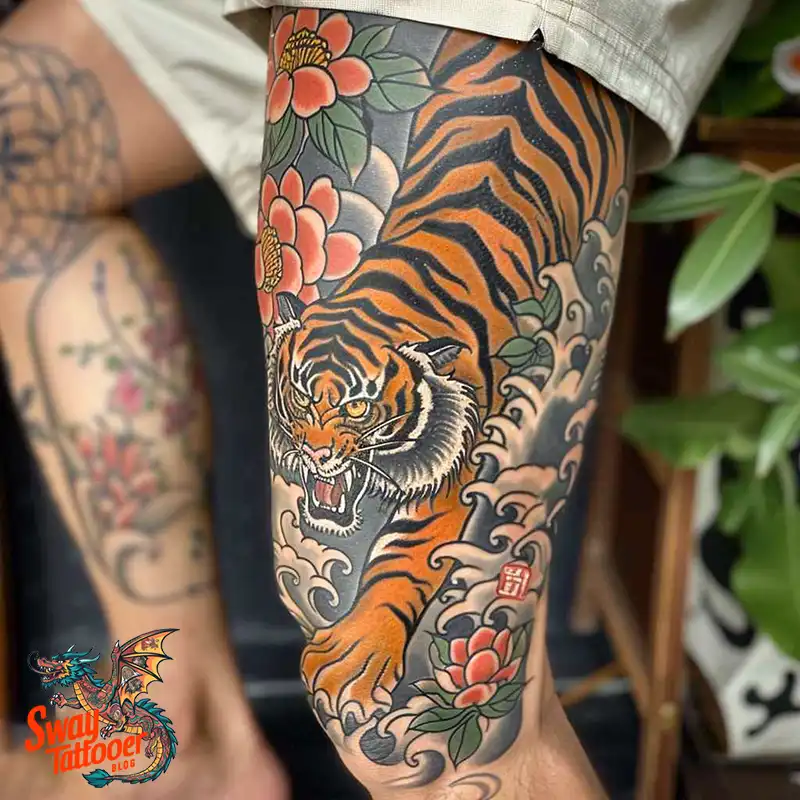
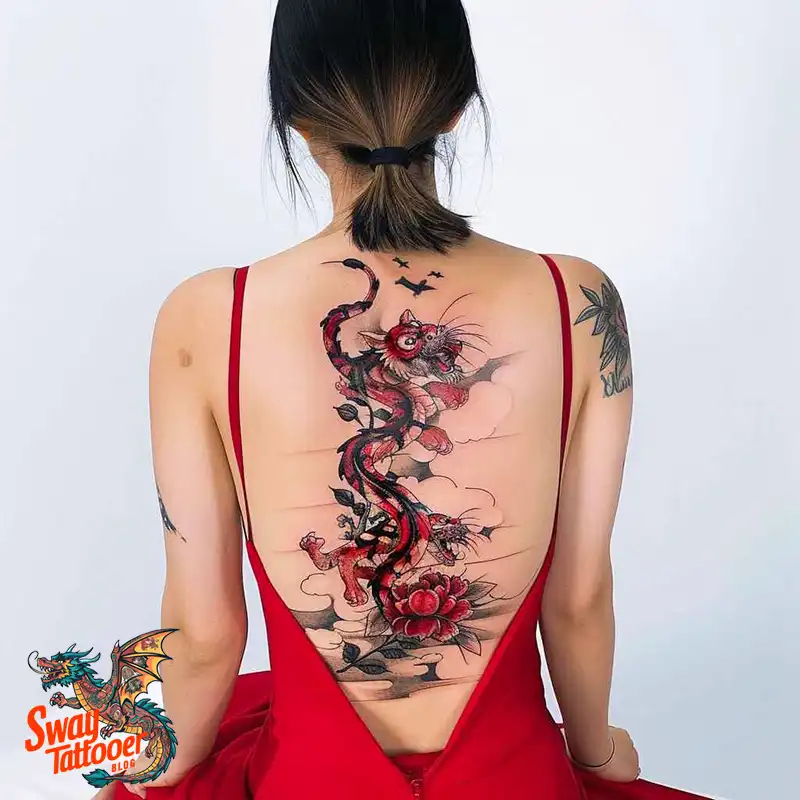

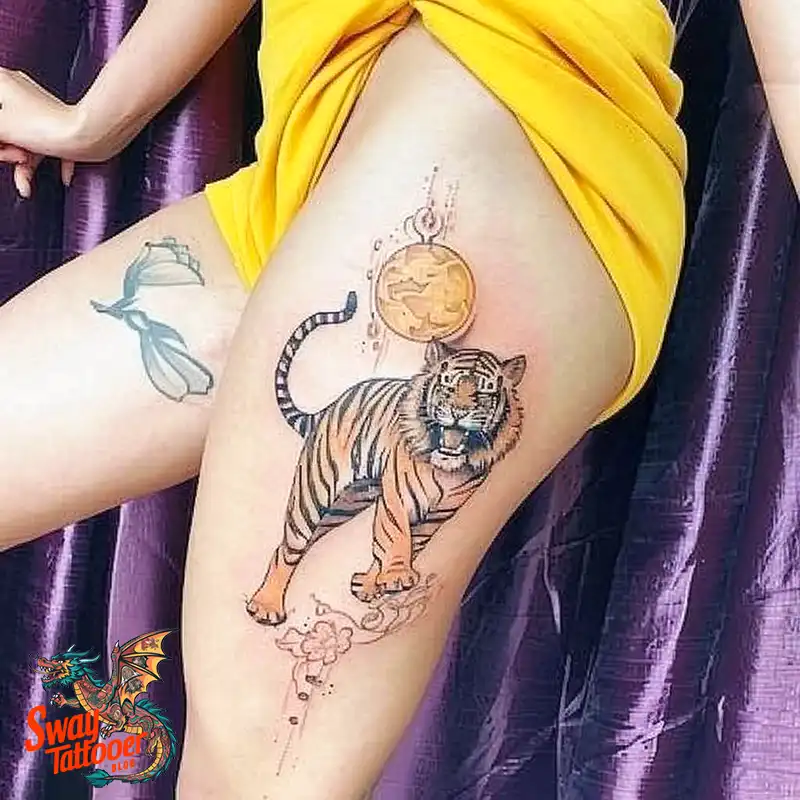
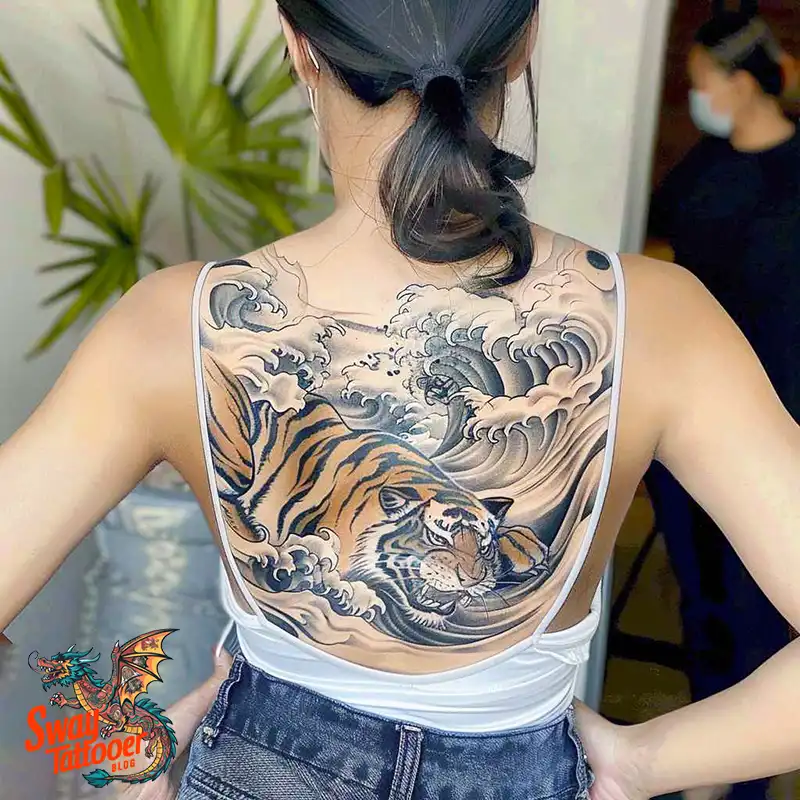
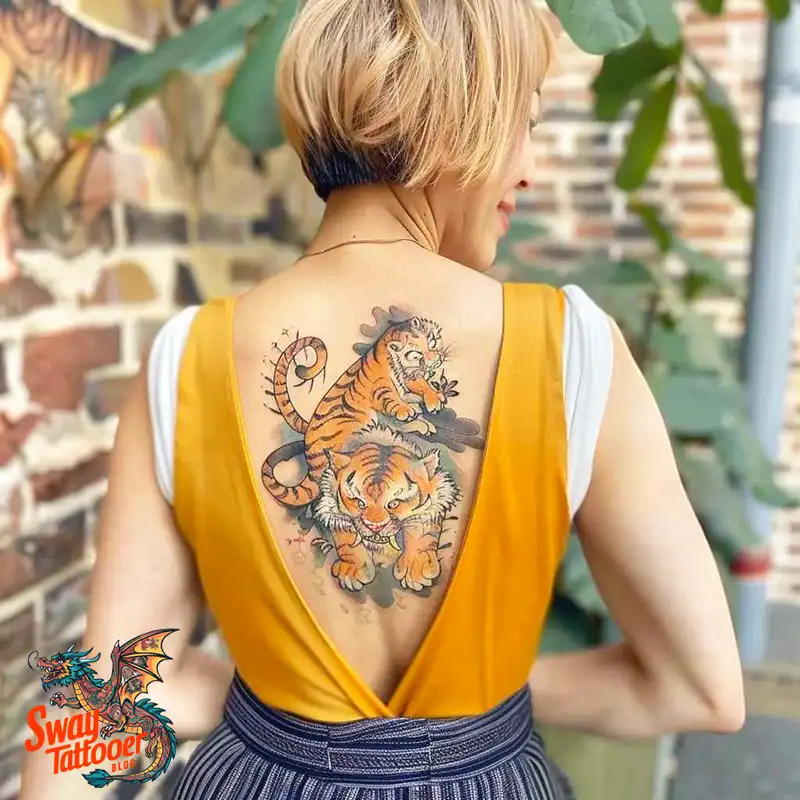
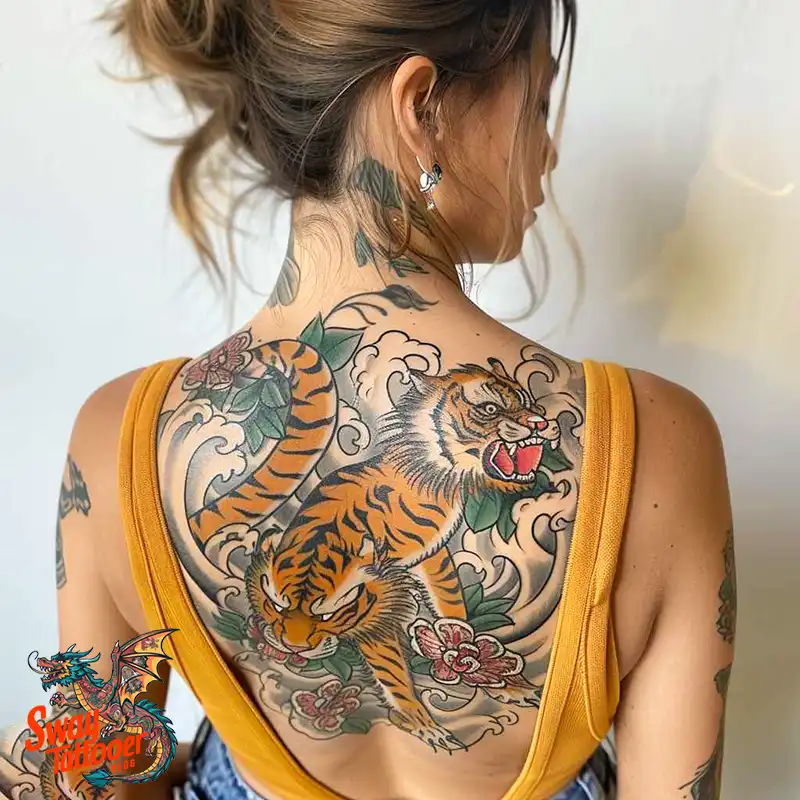
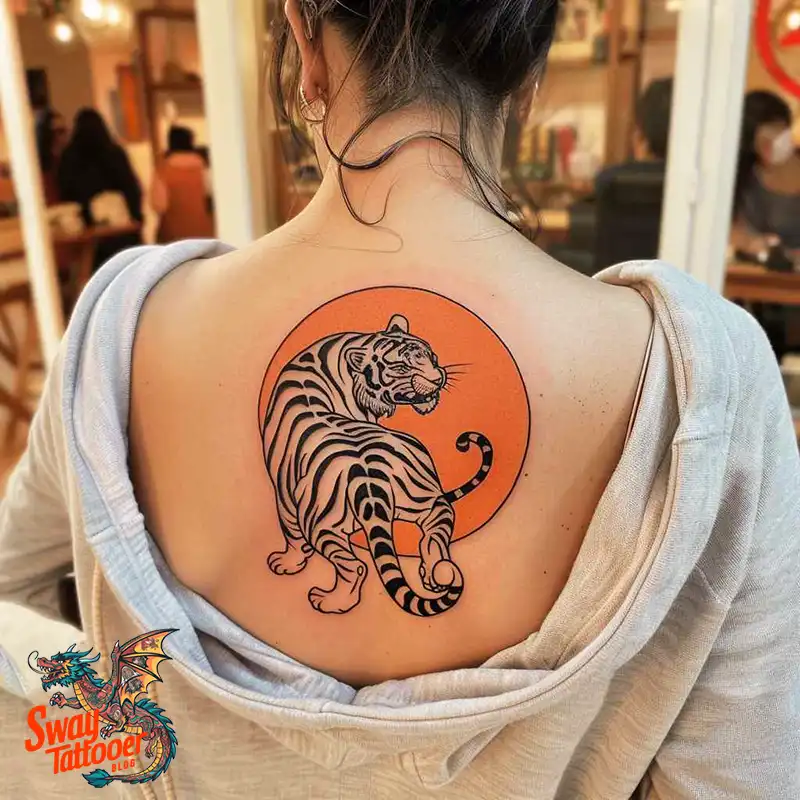
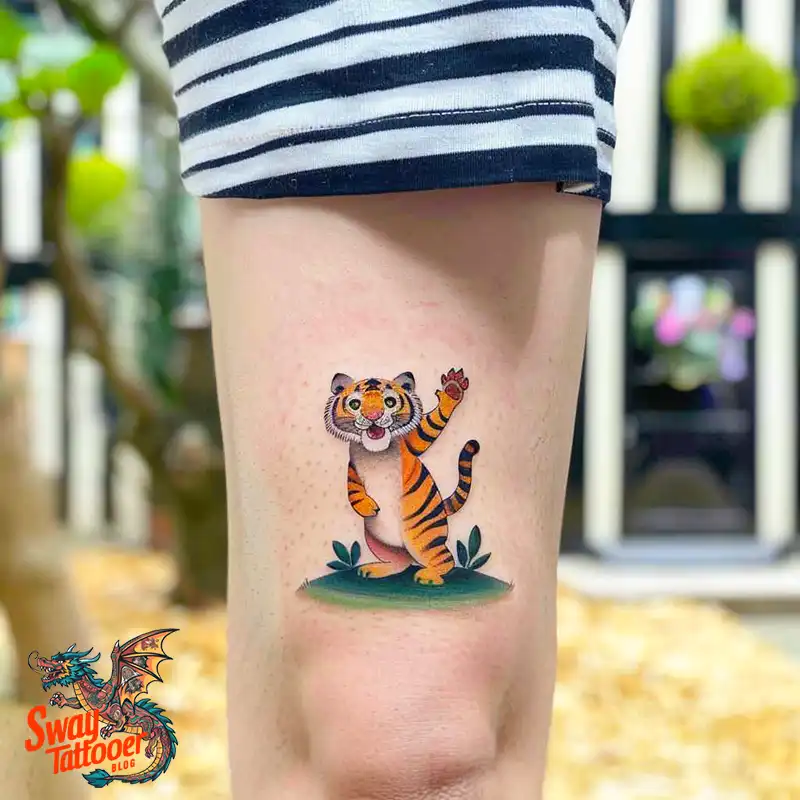
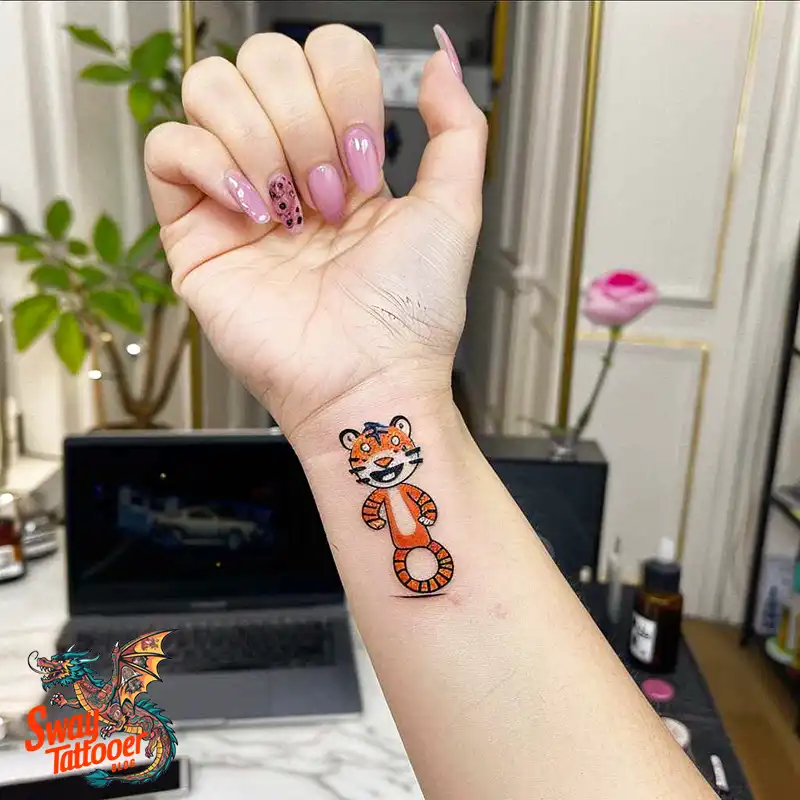
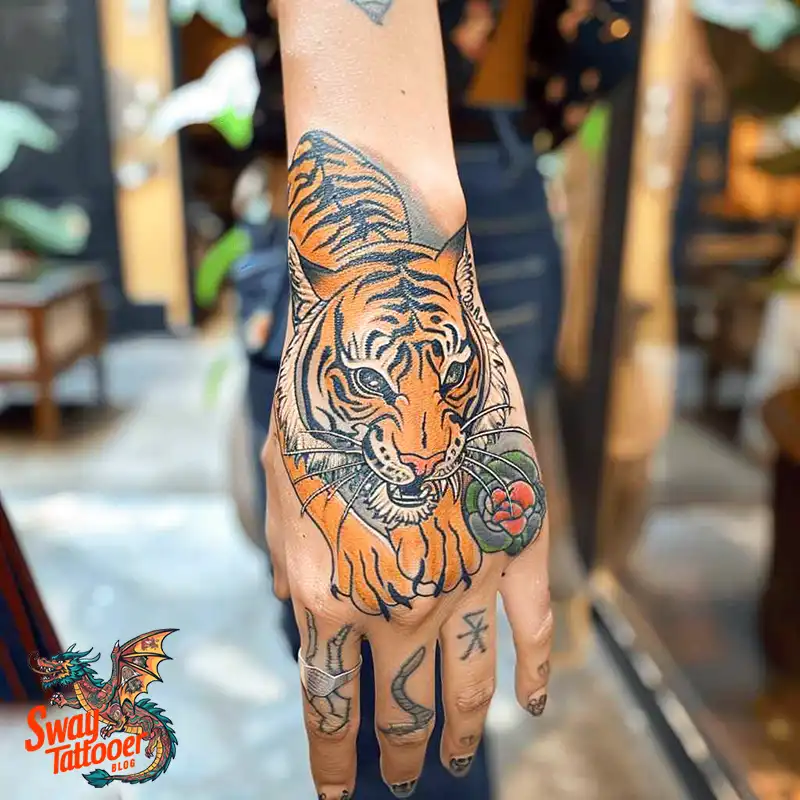
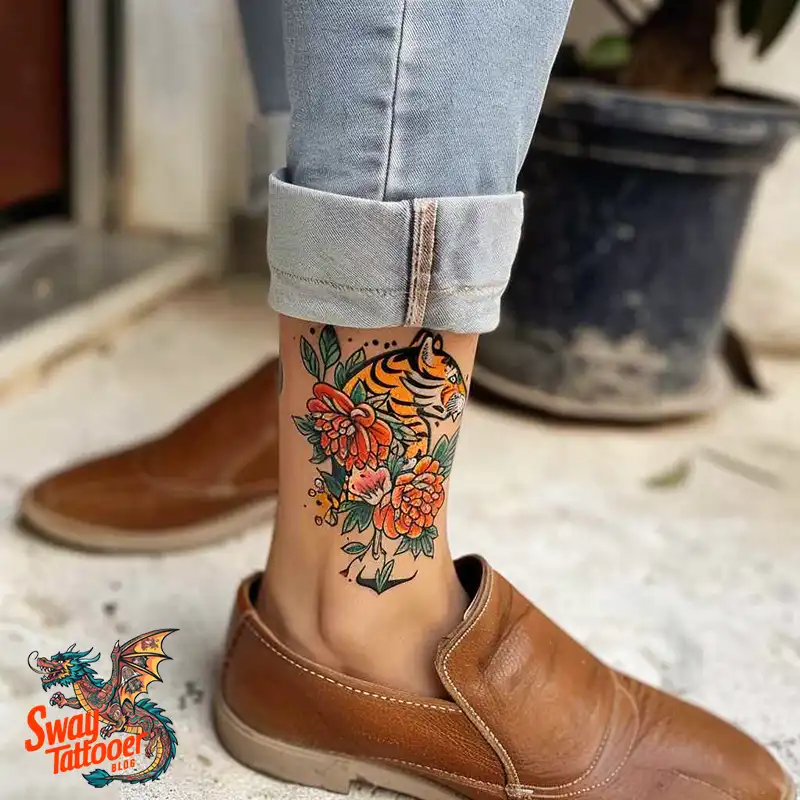
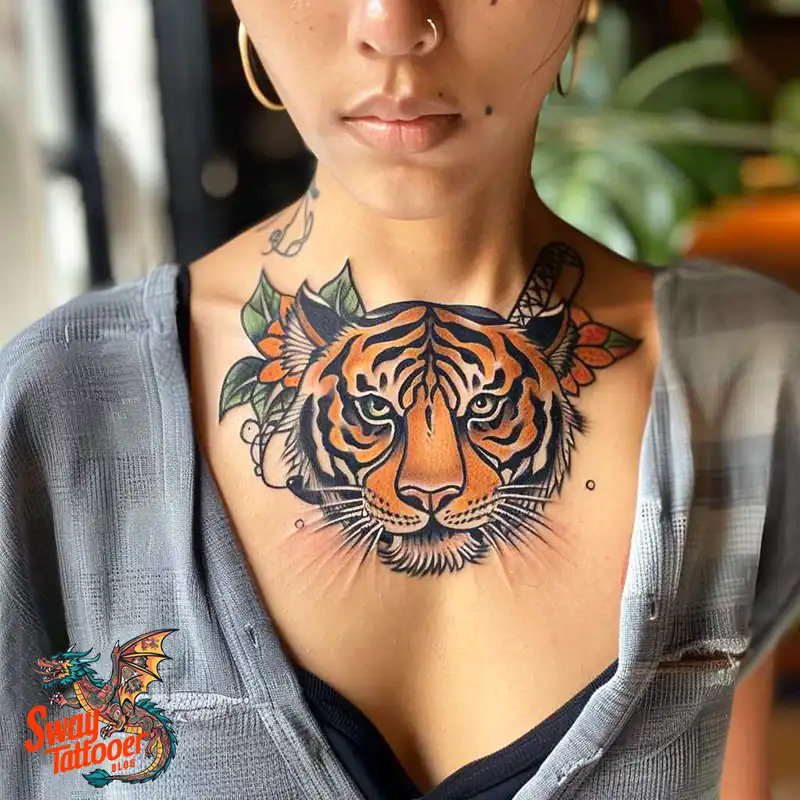
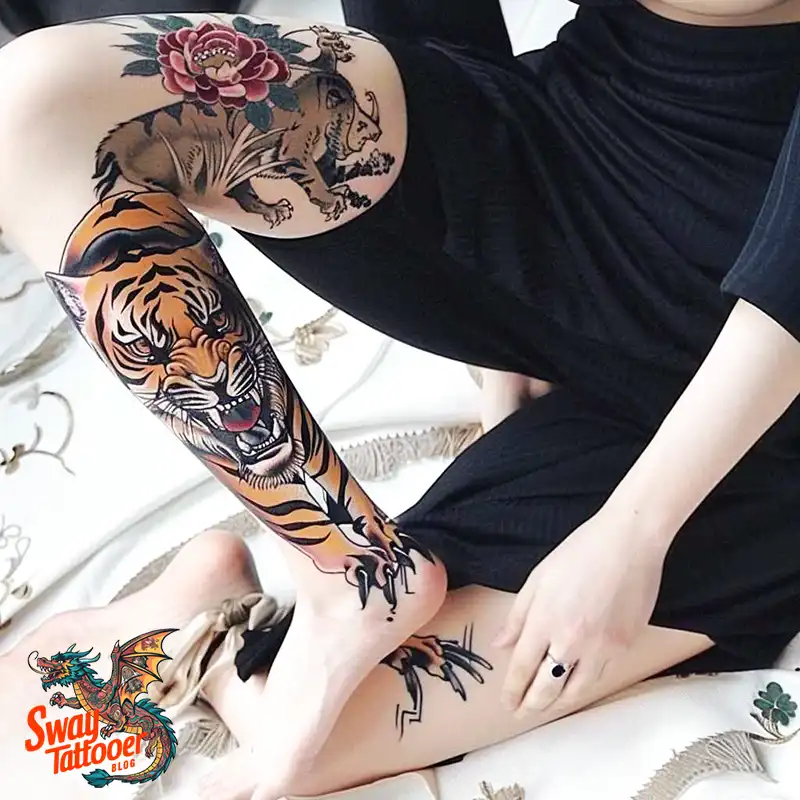
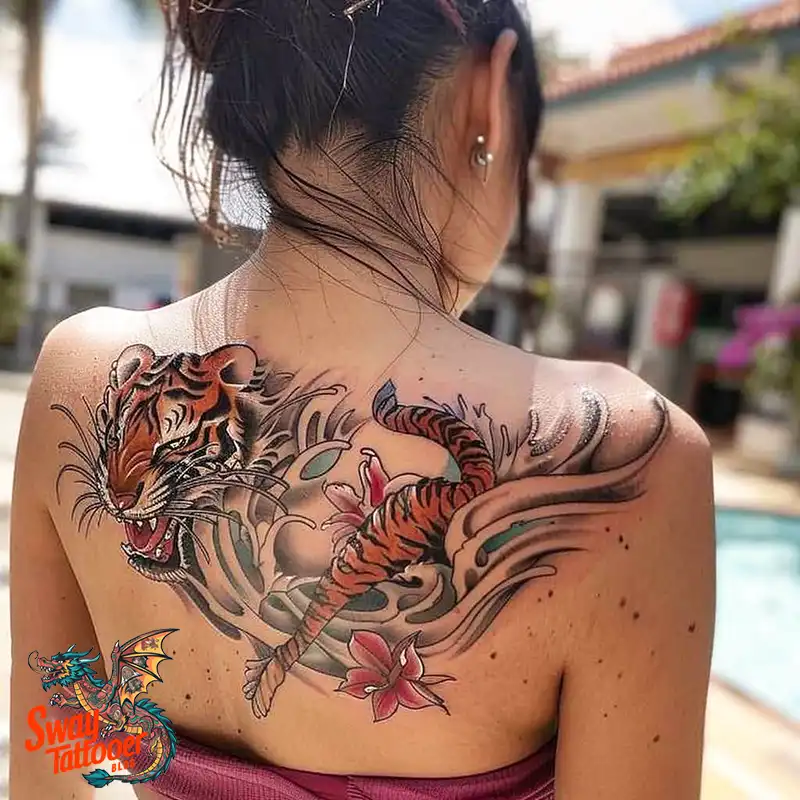
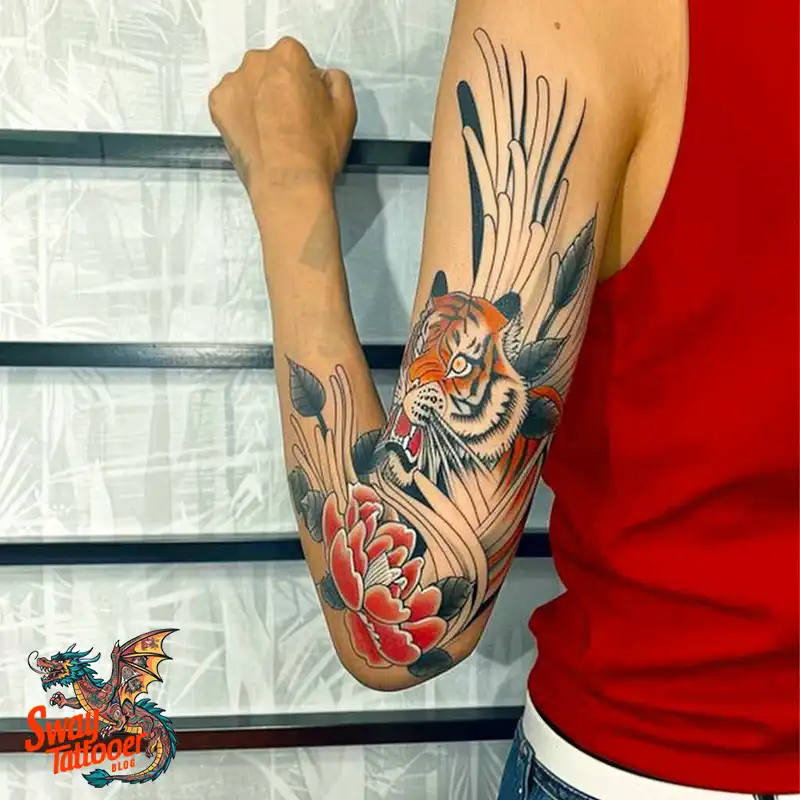
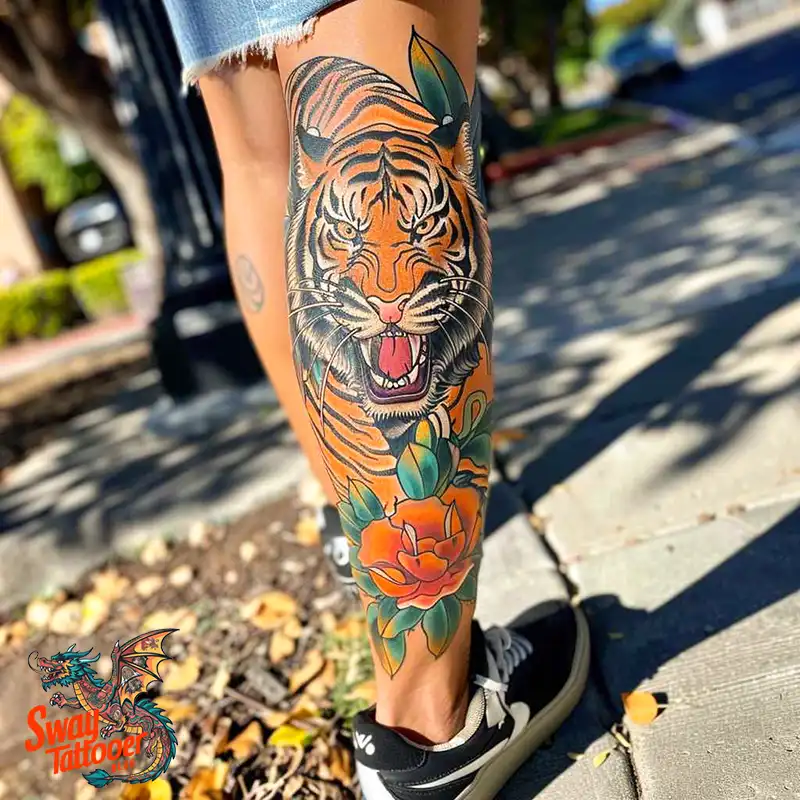
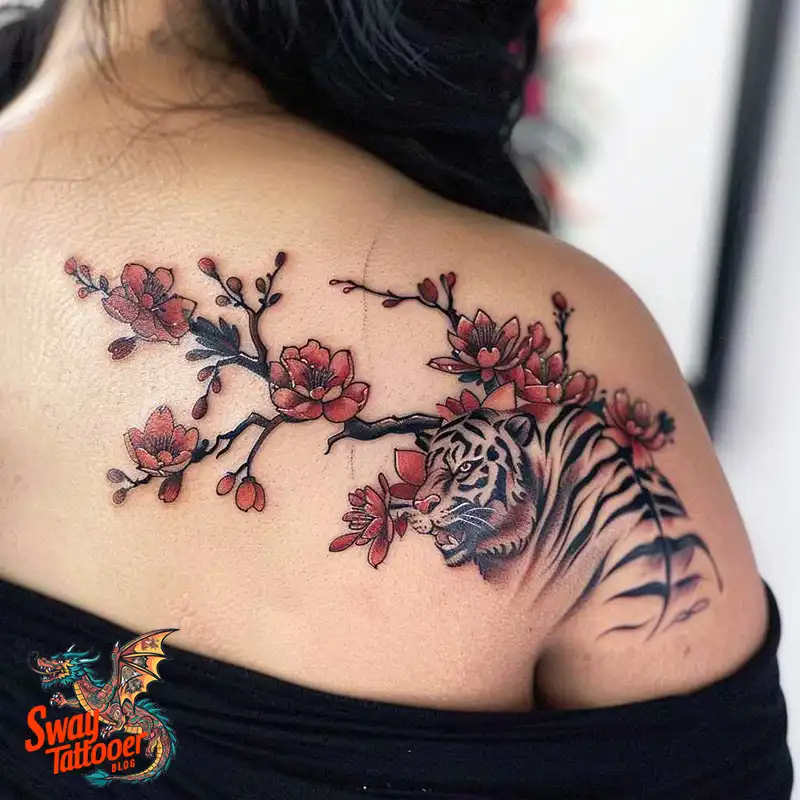
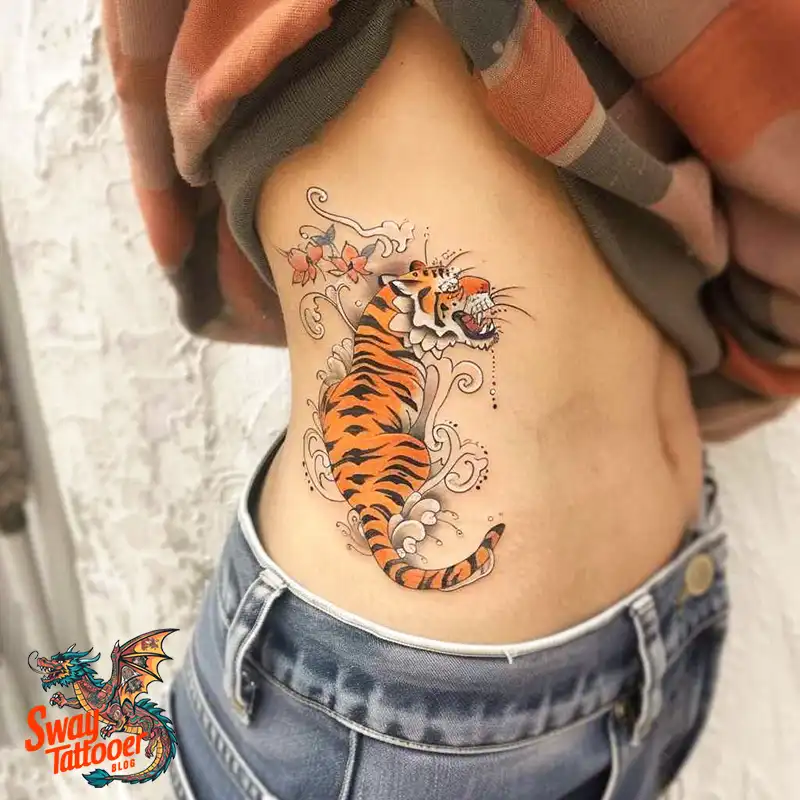
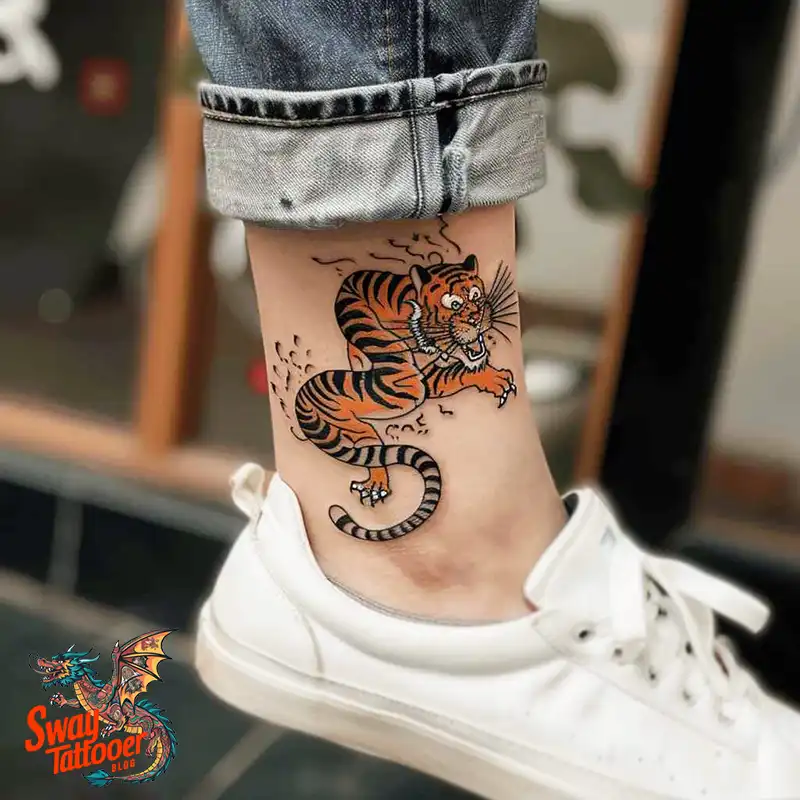
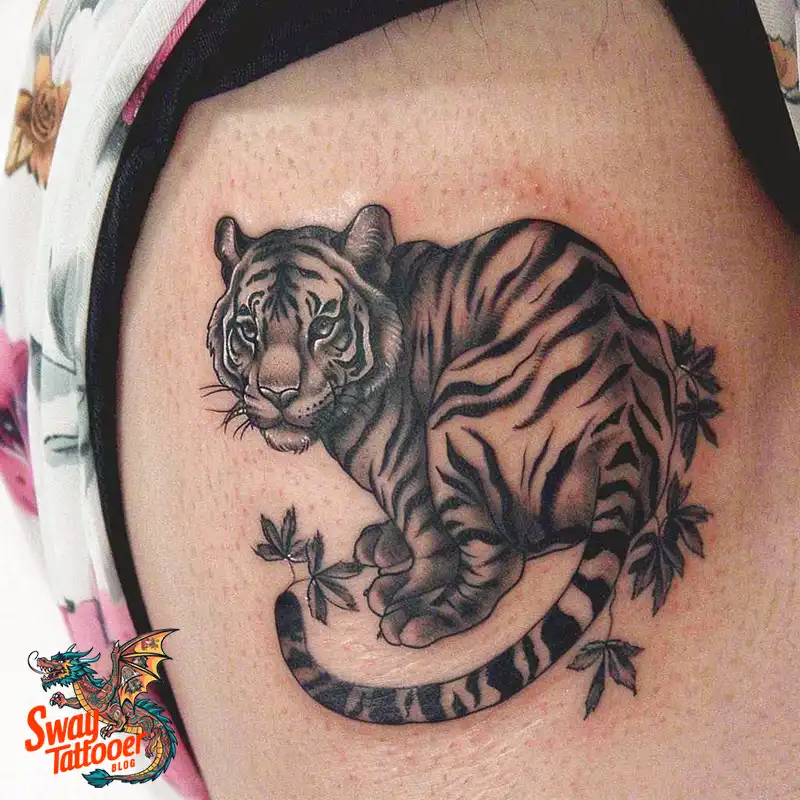
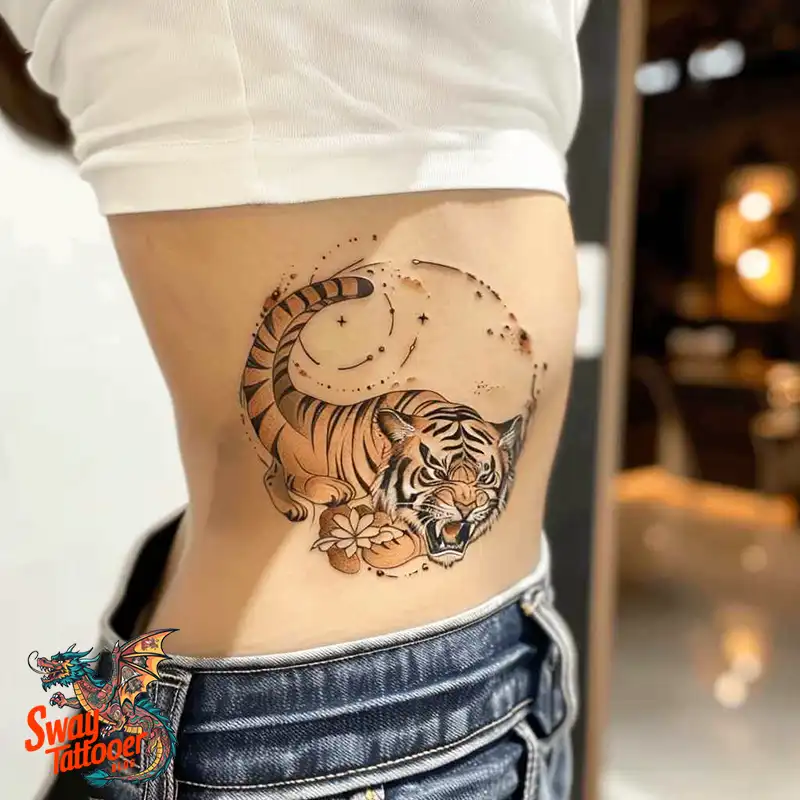
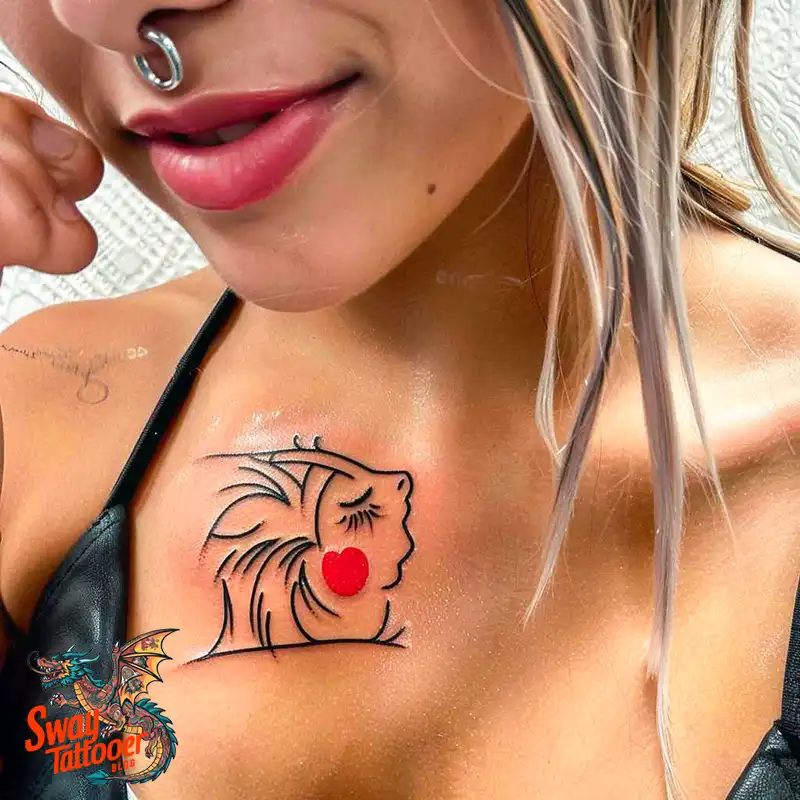
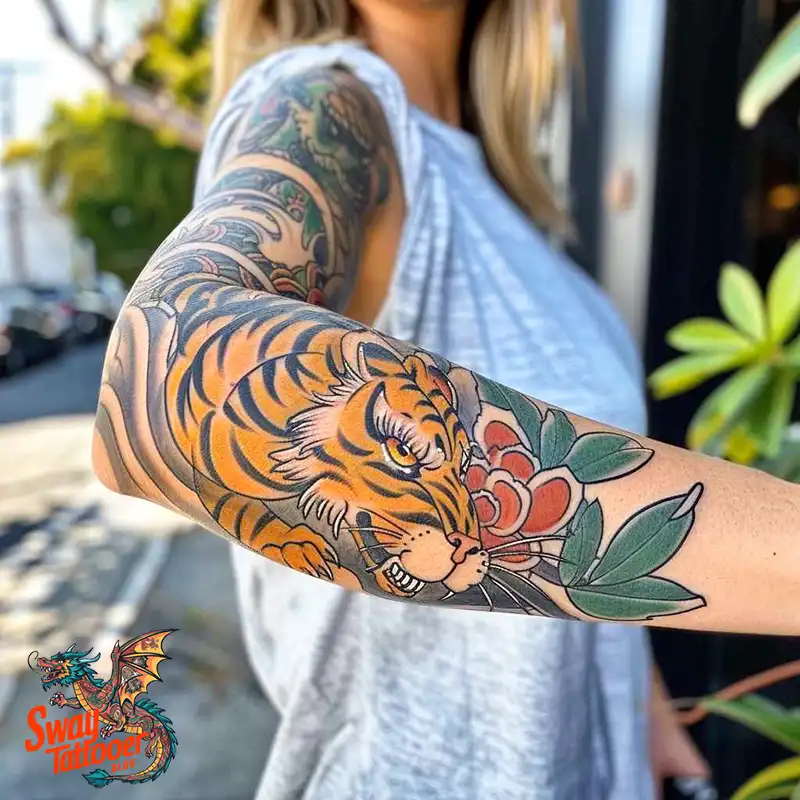
The Rich History of Yokai in Japanese Culture
Yokai are strange creatures in old Japanese stories. People have talked about them for hundreds of years. Some yokai are scary ghosts, and some are playful tricksters. A few famous ones are:
- Kappa: Water creatures that love to play jokes.
- Tengu: Bird-like spirits with long noses. They guard forests and mountains.
- Kitsune: Often shown with many tails, fox spirits can be friendly or mischievous.
- Oni: Demon-like beings with horns and scary faces. They show intense anger and power.
Yokai appear in many art forms, like woodblock prints and kabuki plays. Today, you can also see them in manga, anime, and tattoos.
The Symbolism of the Tiger in Japanese Tattoos
In Japan, the tiger means power, courage, and protection. People believed tigers could chase away evil spirits and sickness. In old myths, tigers guard the West in a group called the Four Symbols.
On the skin, a tiger tattoo stands for:
- Courage: Being brave in tough times.
- Strength: Having the power to keep going.
- Guardianship: Helping protect you from harm.
The Combination of Yokai and Tiger in Tattoo Art
Putting a yokai next to a tiger in a tattoo makes a strong image. It shows two sides of life—fun and danger, strength and care. Here are some popular mixes:
Oni and Tiger
- Design: A fierce demon fighting or riding a tiger.
- Meaning: It shows how wild anger and strong control can battle inside us.
Kappa and Tiger
- Design: A playful water sprite near a tiger, flowing around it.
- Meaning: It reminds us to enjoy fun times but stay alert for hidden risks.
Tengu and Tiger
- Design: A bird spirit flying above or beside a tiger.
- Meaning: It blends wisdom and power, guiding you with innovative strength.
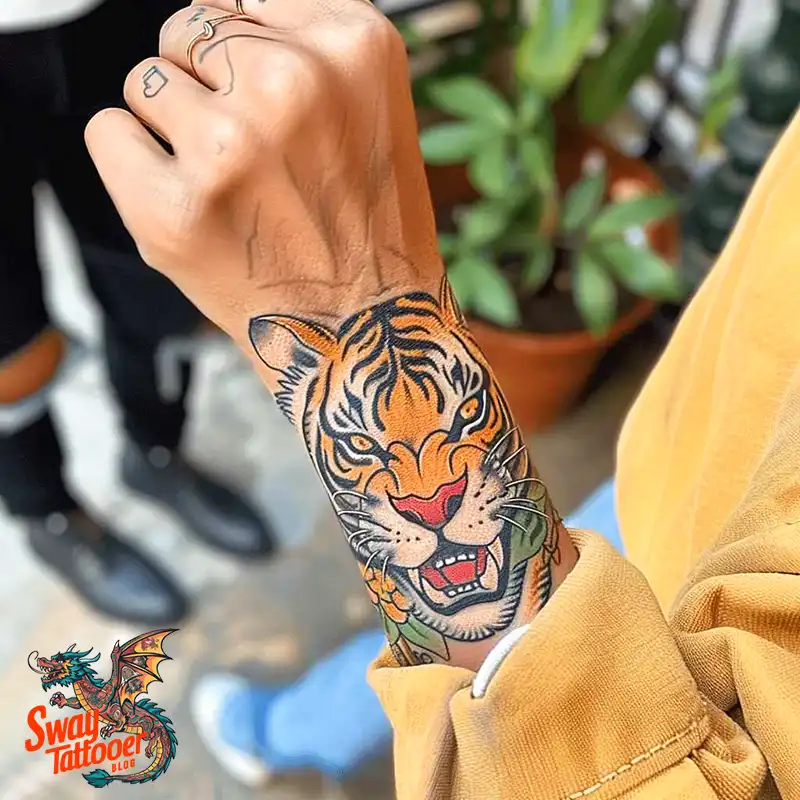
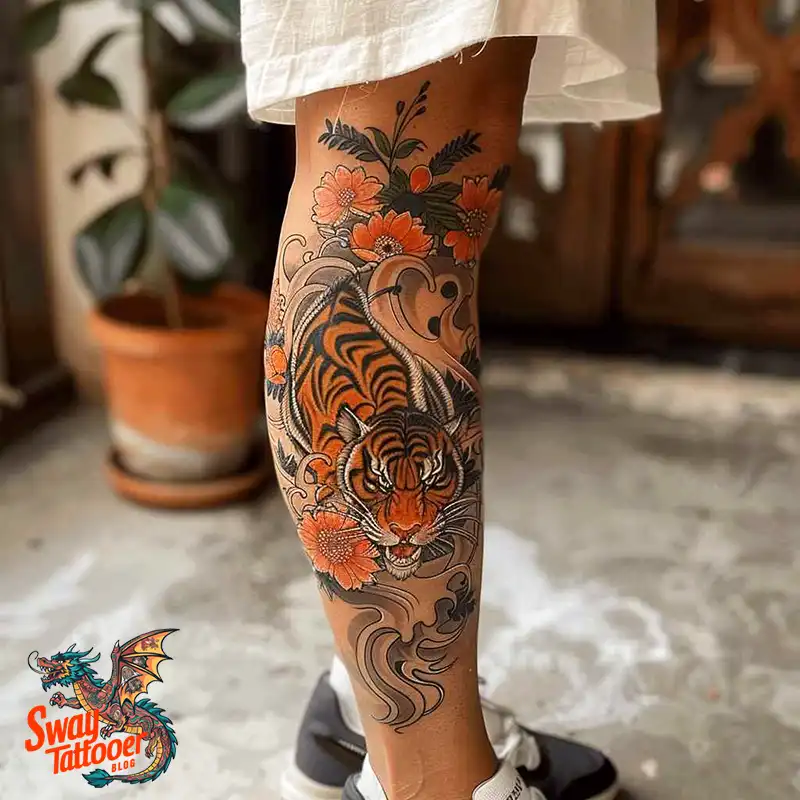
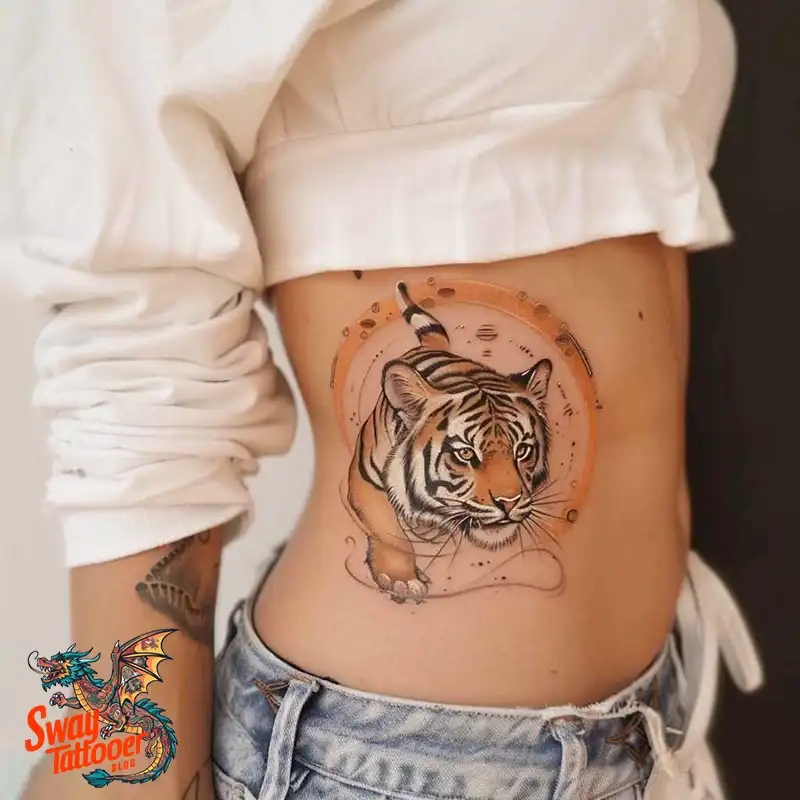
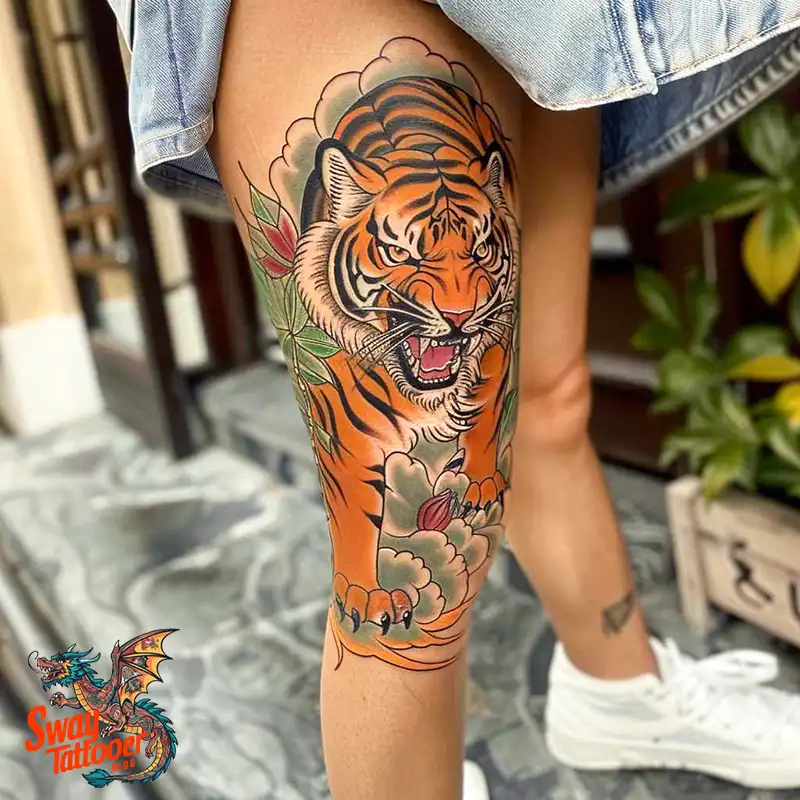

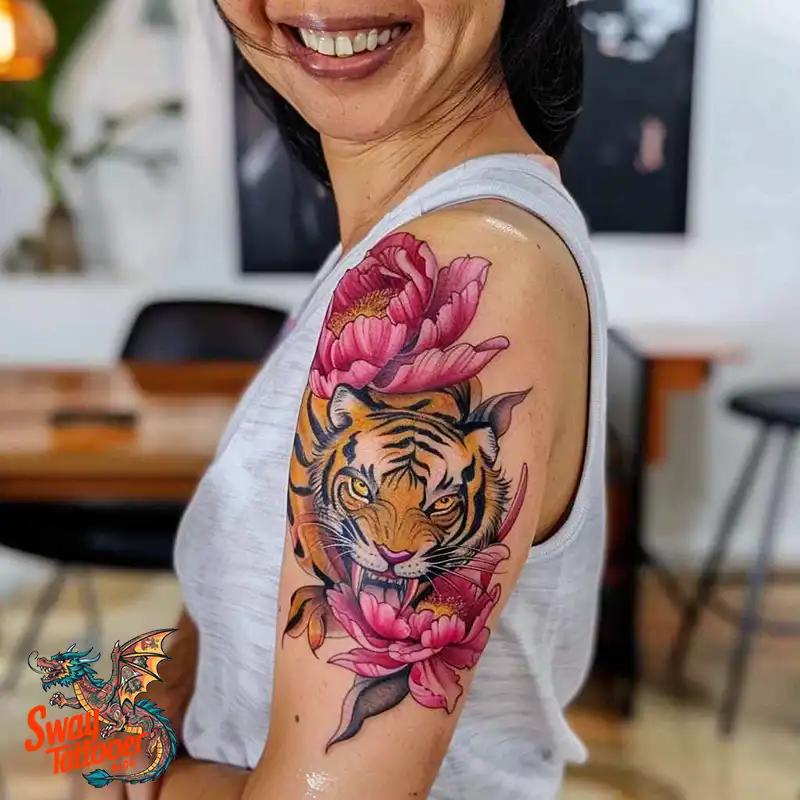
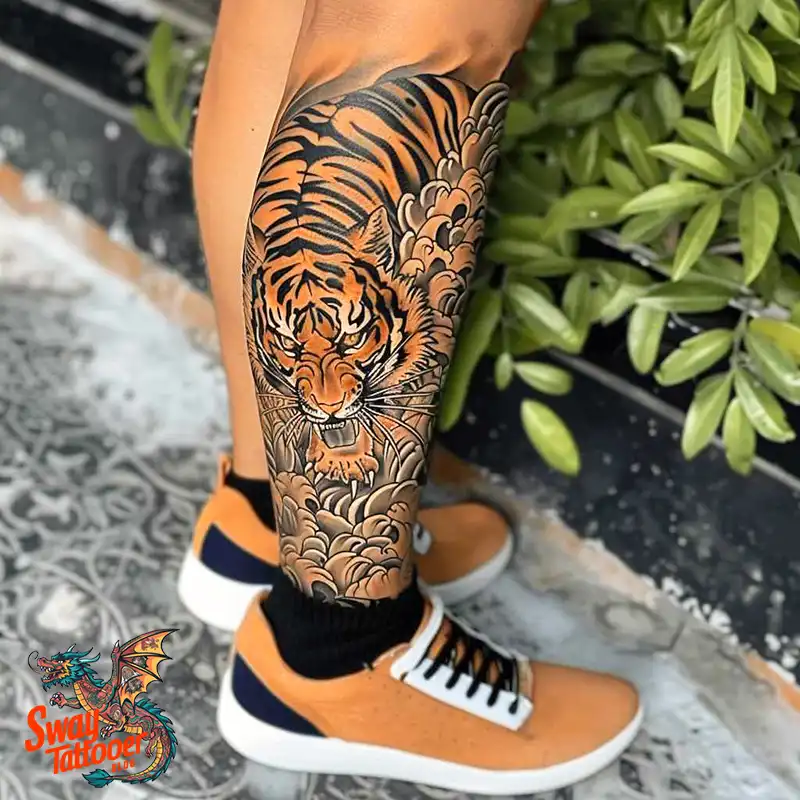
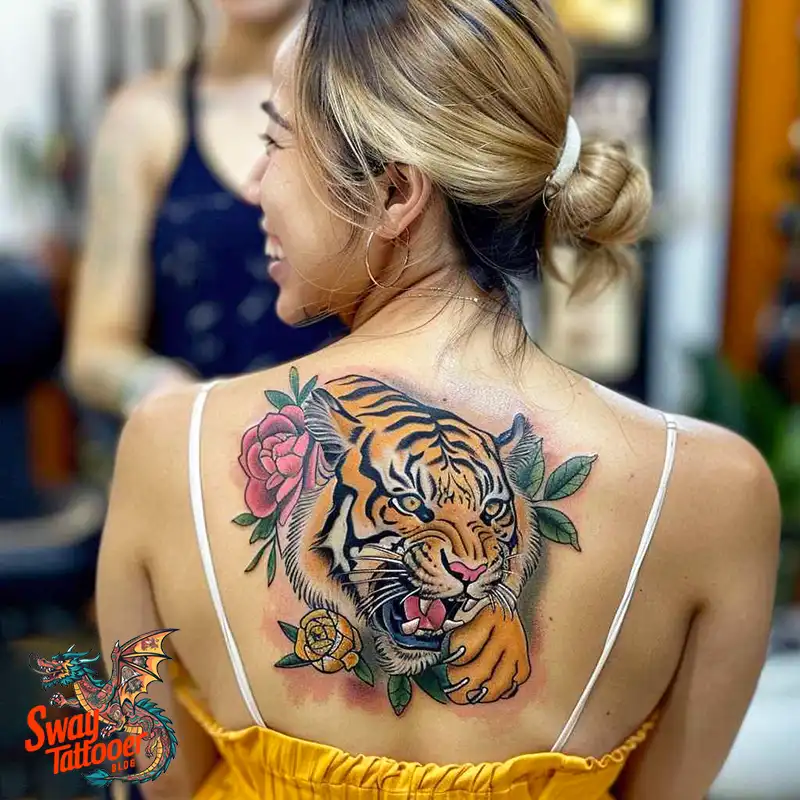
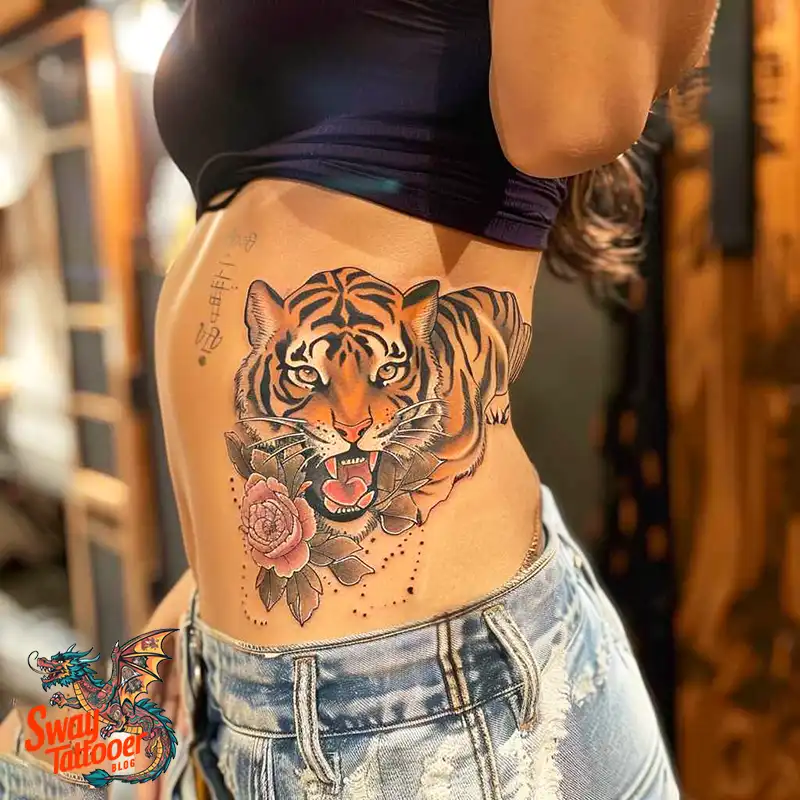
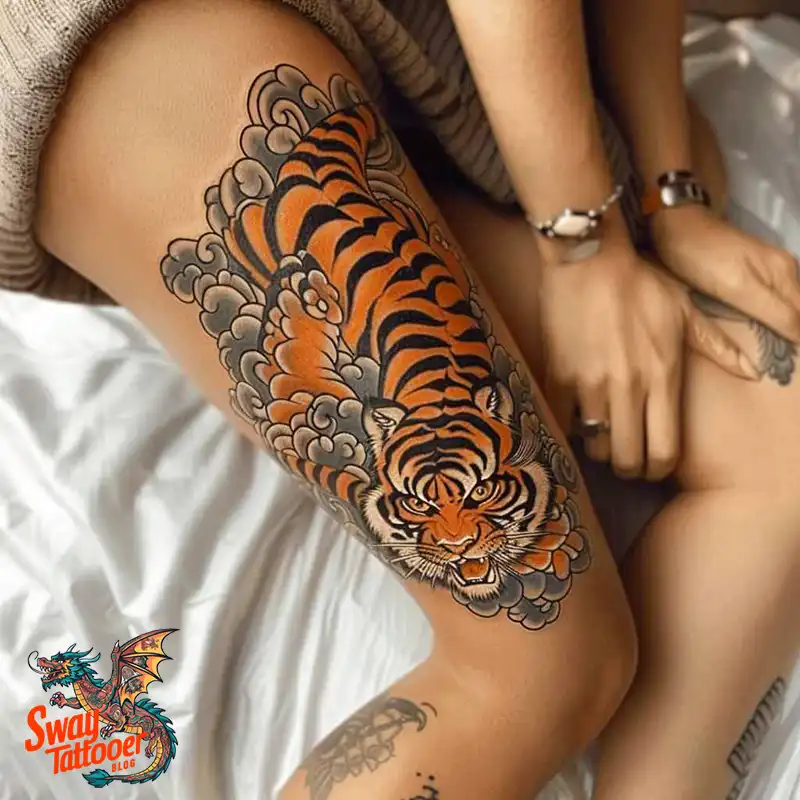
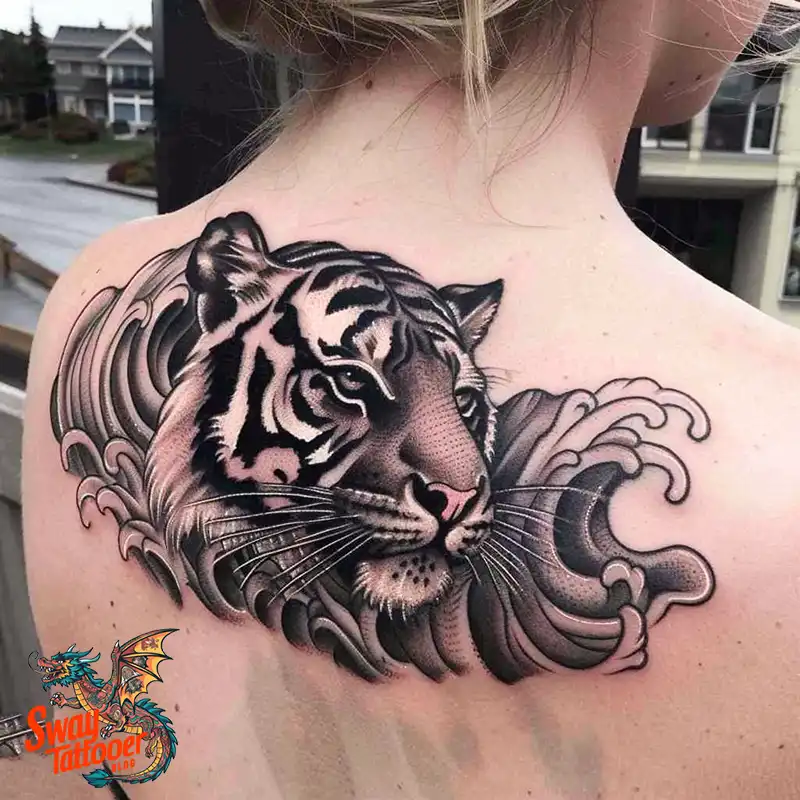
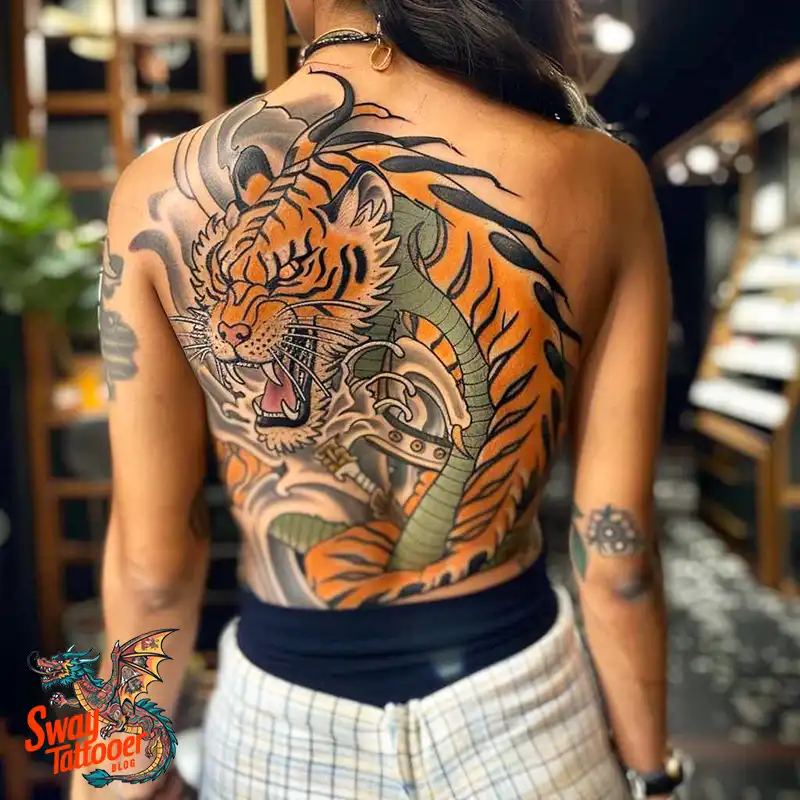
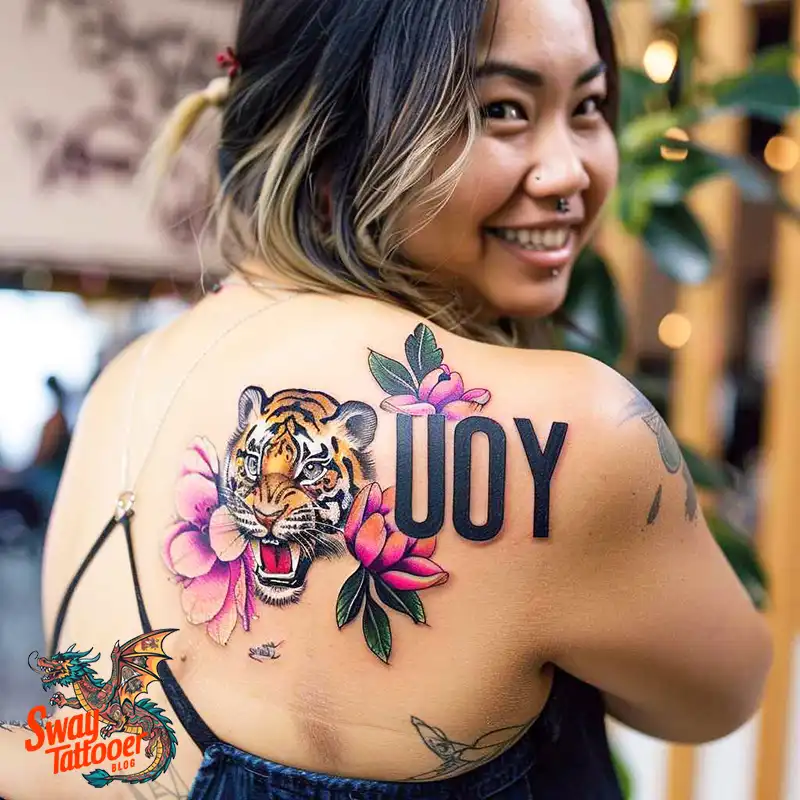
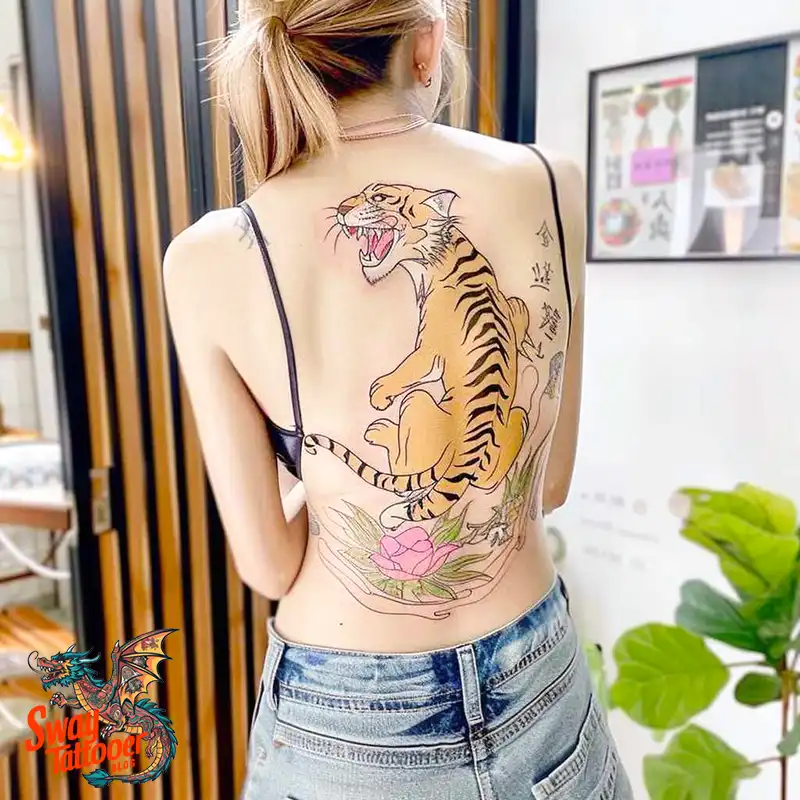
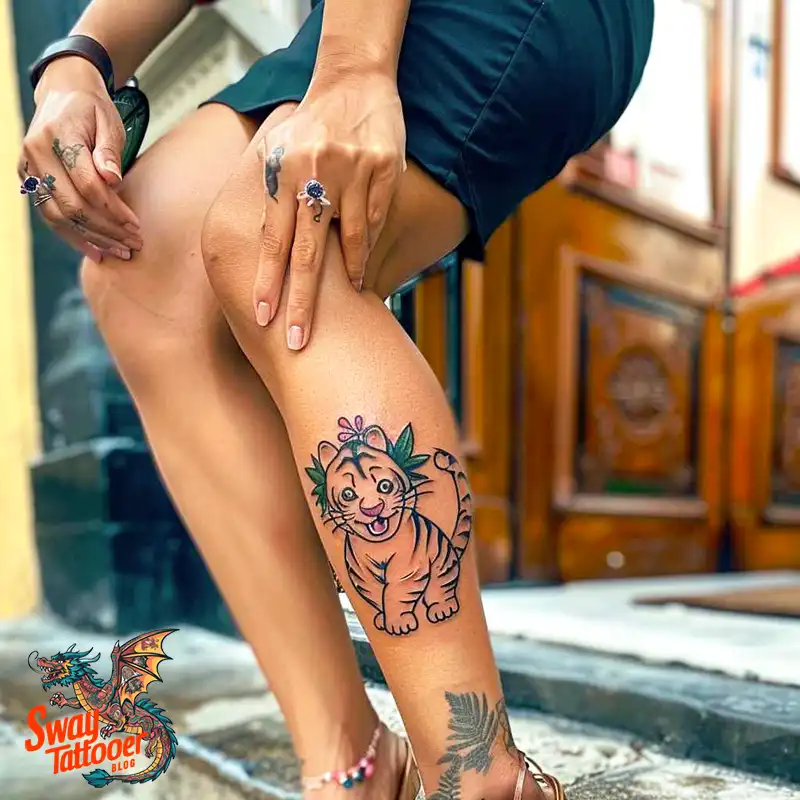
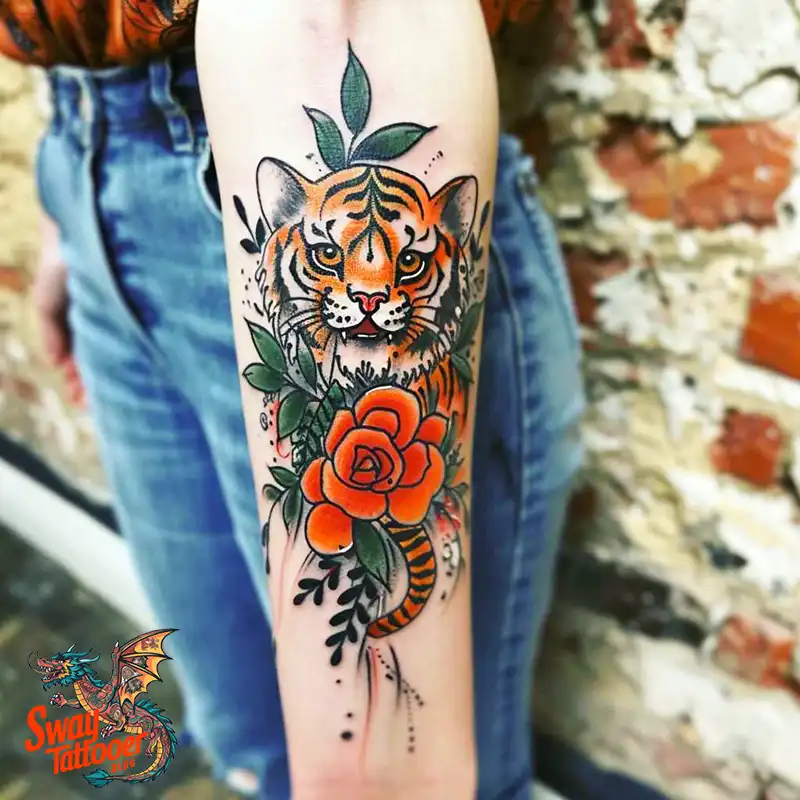
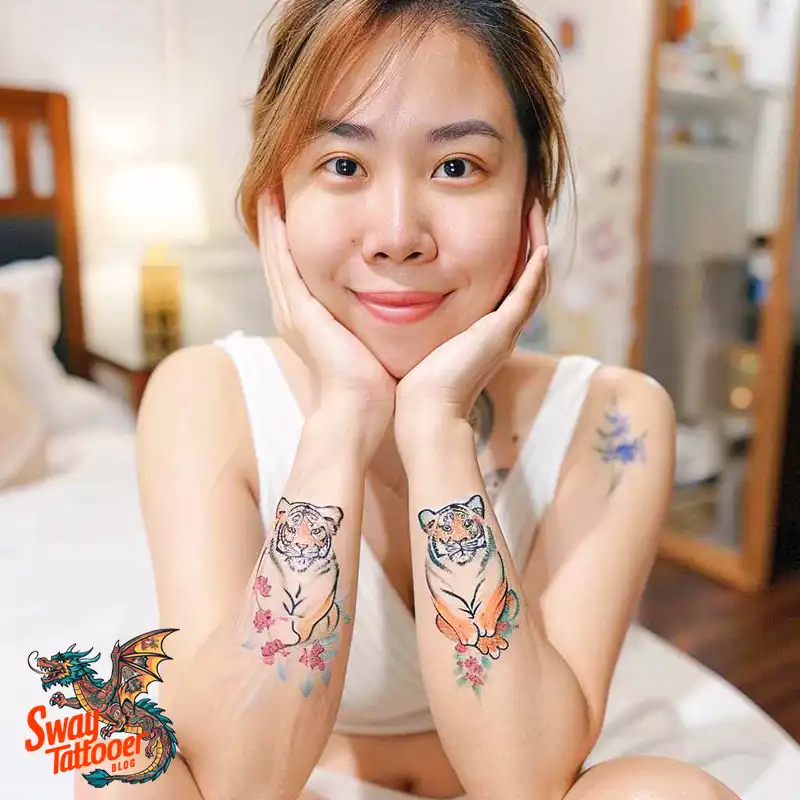
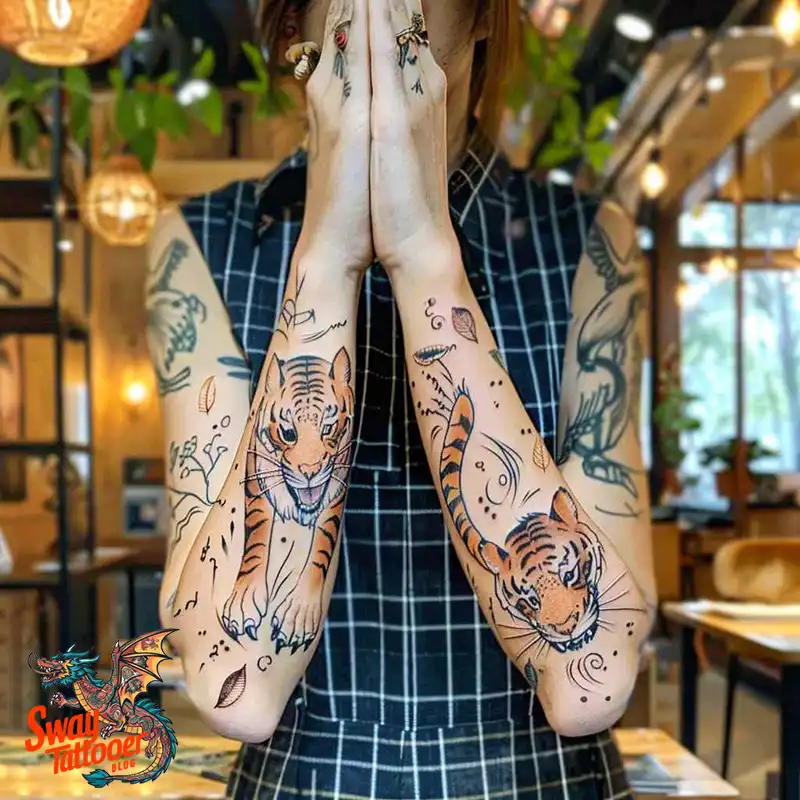
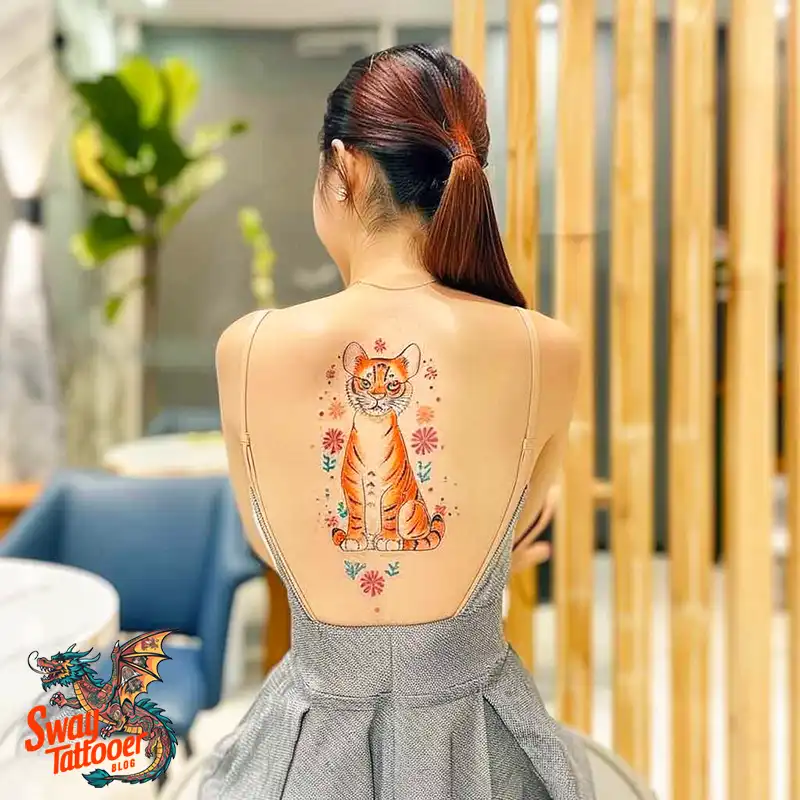
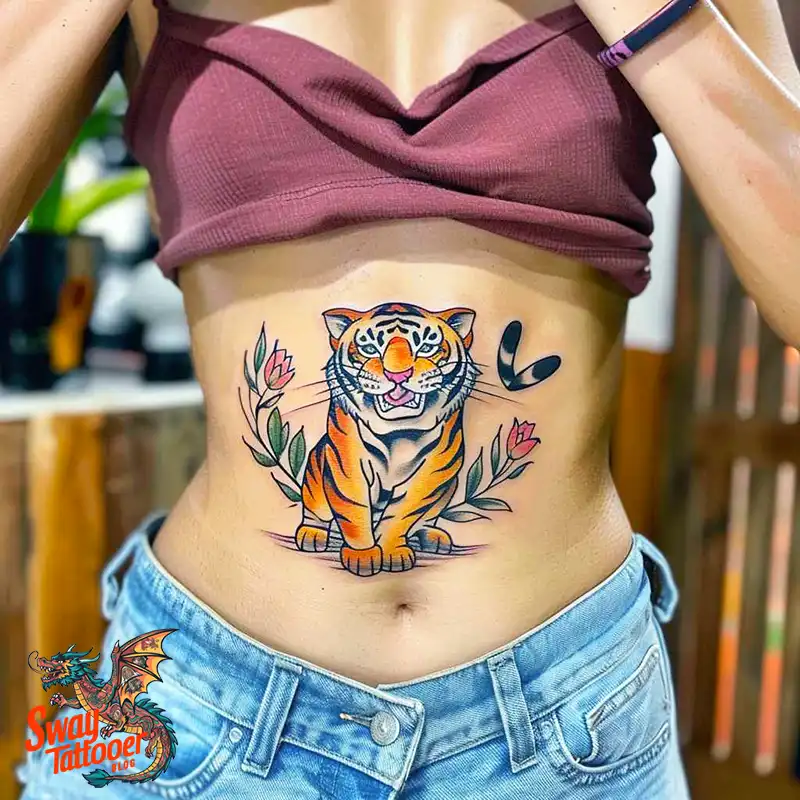
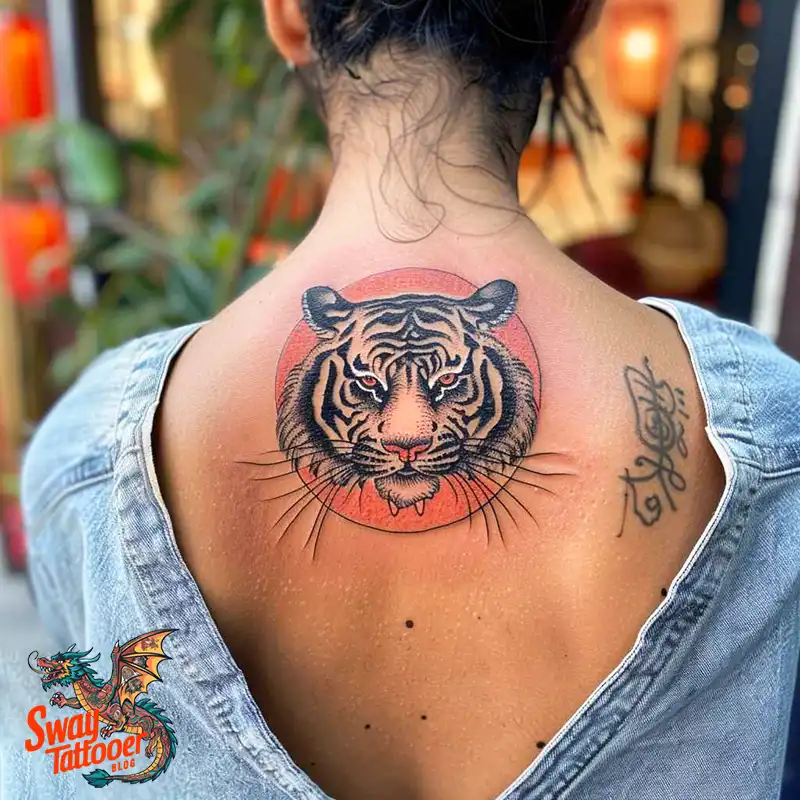
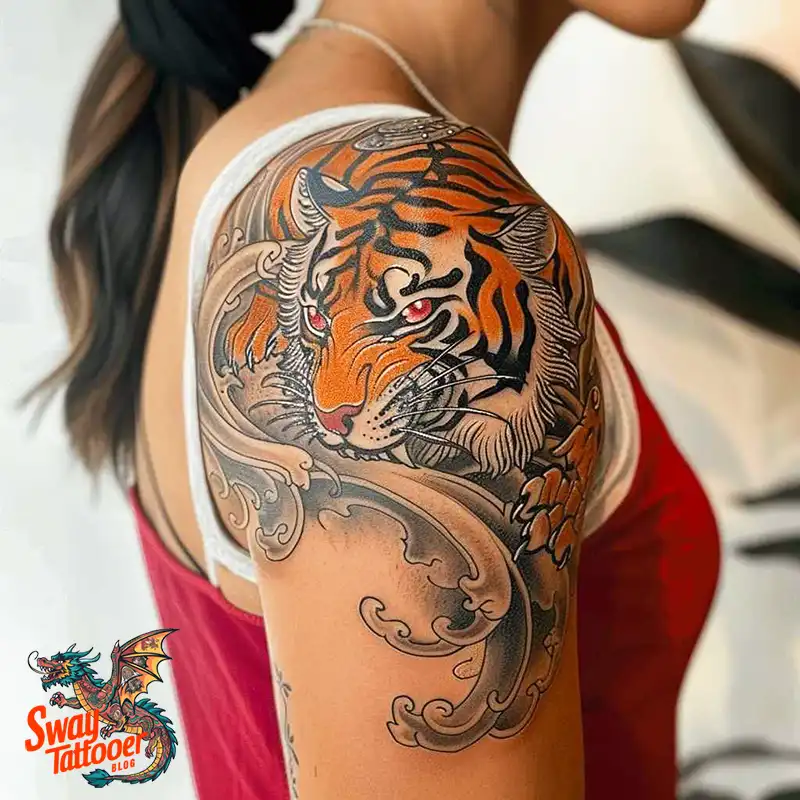
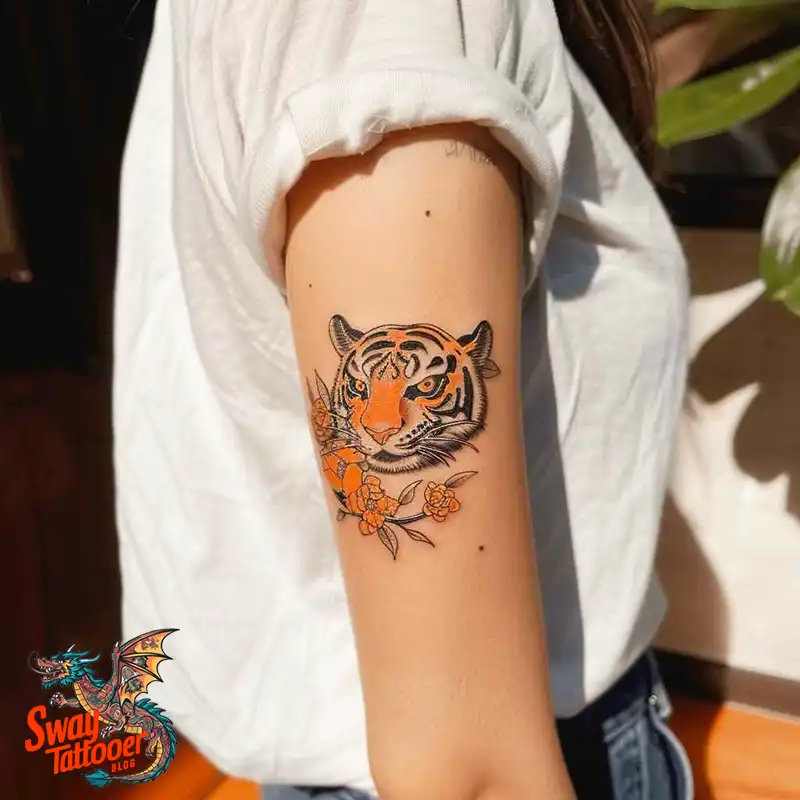
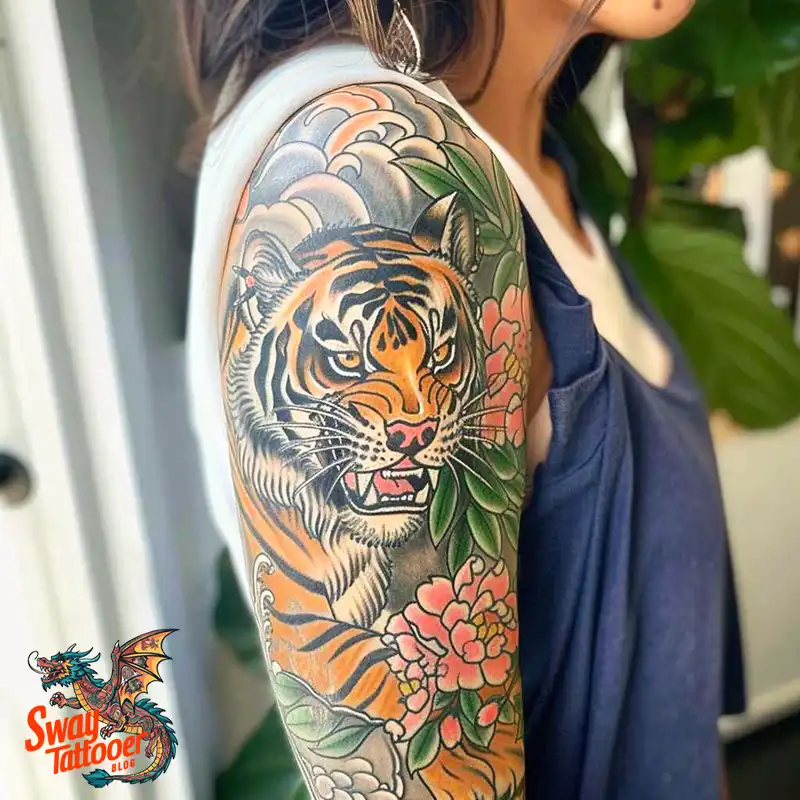
The Artistry of Yokai Japanese Tiger Tattoos
Making a yokai-tiger tattoo takes skill and respect for old art. Key parts of these tattoos include:
- Traditional Techniques: Tebori: Hand-poked tattooing for a unique feel.
- Color Palette: Bright reds, bold blacks, and sunny yellows.
- Composition and Flow Background Elements: Waves, clouds, or cherry blossoms tie the design together.
- Body Placement: Big areas like the back, arms, or thighs hold all the detail.
Selecting the Appropriate Artist
Yokai tiger tattoos are special. To get a great one, you need the right artist:
- Research: Find artists who know Japanese tattoo styles and check their past work.
- Consultation: Talk through your ideas and what they mean to you.
- Cultural Sensitivity: Make sure the artist respects Japan’s traditions and lore.
Yokai Japanese Tiger Tattoos:
The following are some types of yokai Japanese tiger tattoos, along with brief descriptions and explanations of their meanings.
Nue‑Tiger Tattoo
The Nue is a mix of animals. It has a tiger’s body, a monkey’s face, and a snake’s tail.
Relevance:
Long ago, people thought the Nue brought bad luck and sickness. A Nue‑tiger tattoo shows that power and chaos can live together.
Byakko (White Tiger) Tattoo
Byakko is one of the four guardian beasts in Chinese and Japanese stories. It stands for the West and the autumn season. Byakko looks like a glowing white tiger with mighty strength.
Relevance:
A Byakko tattoo means courage and protection. It can help you feel safe from evil spirits and bring balance to your life.
Bake‑neko Tiger Tattoo
A Bake‑neko is a cat that lives so long it gains magic. It can shape‑shift and act very strangely. A Bake‑neko tiger tattoo might show a tiger with long whiskers and eerie eyes.
Relevance:
Bake‑neko stands for mystery and change. This tattoo can remind you that hidden talents and surprises can show up in everyday life.
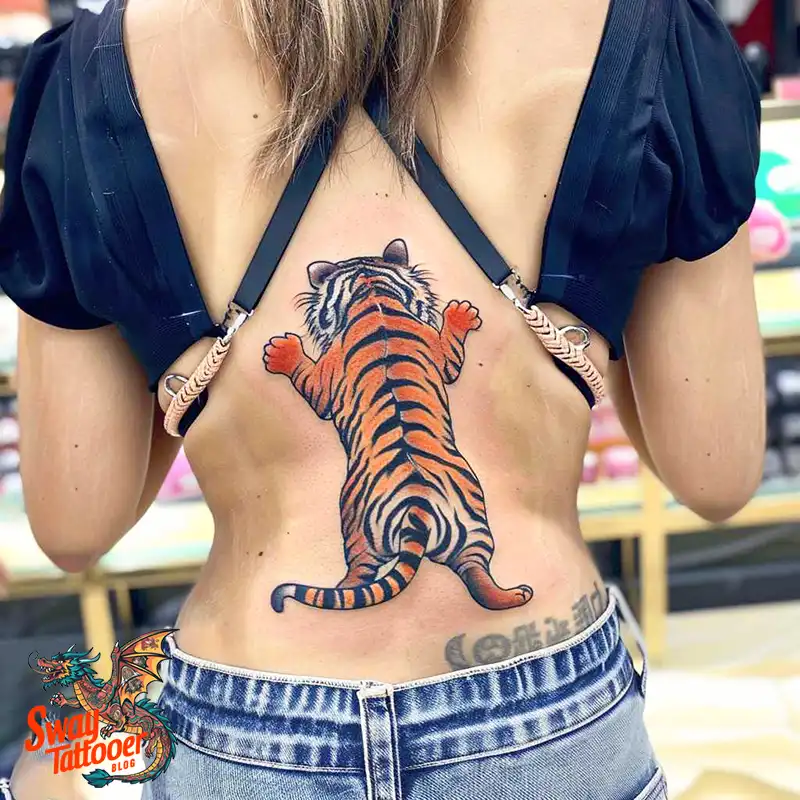
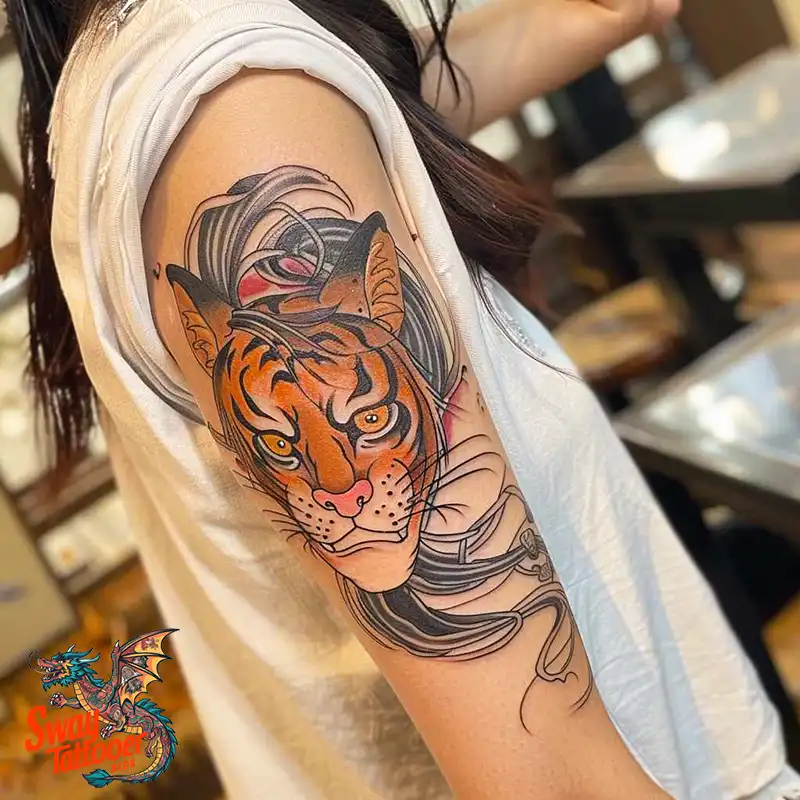
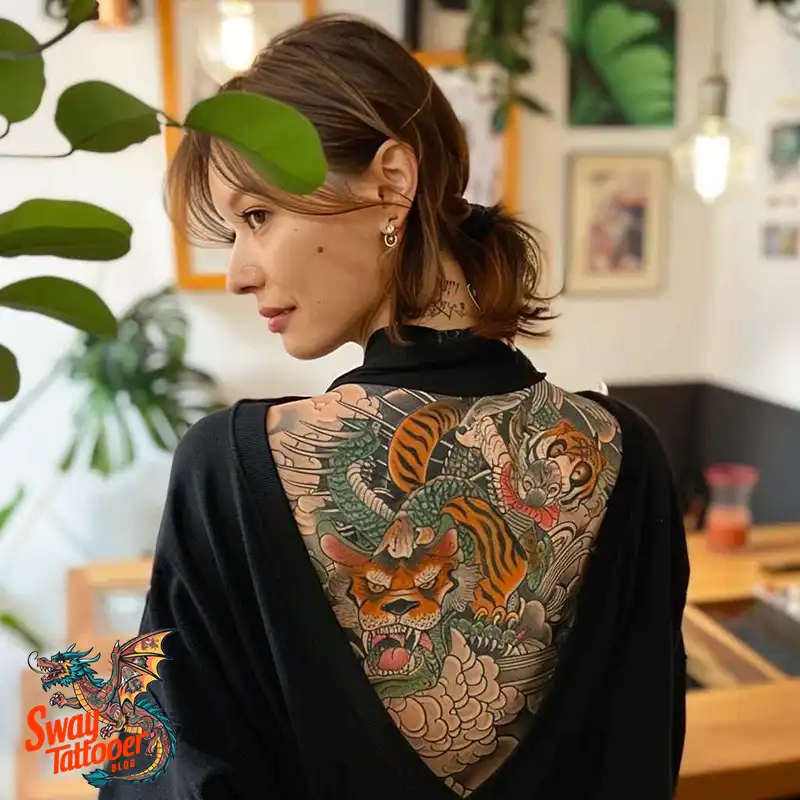
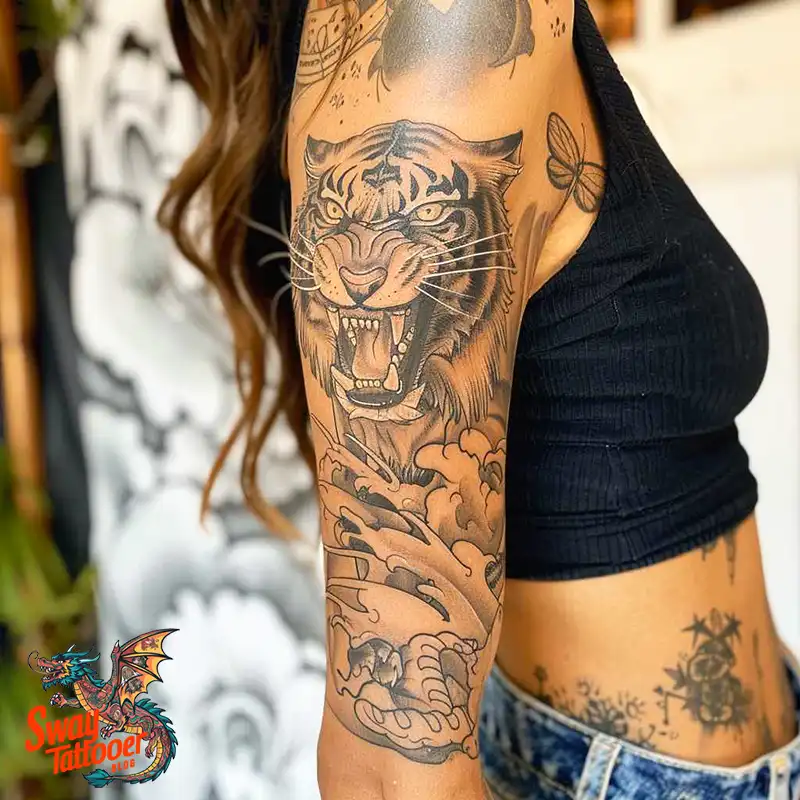
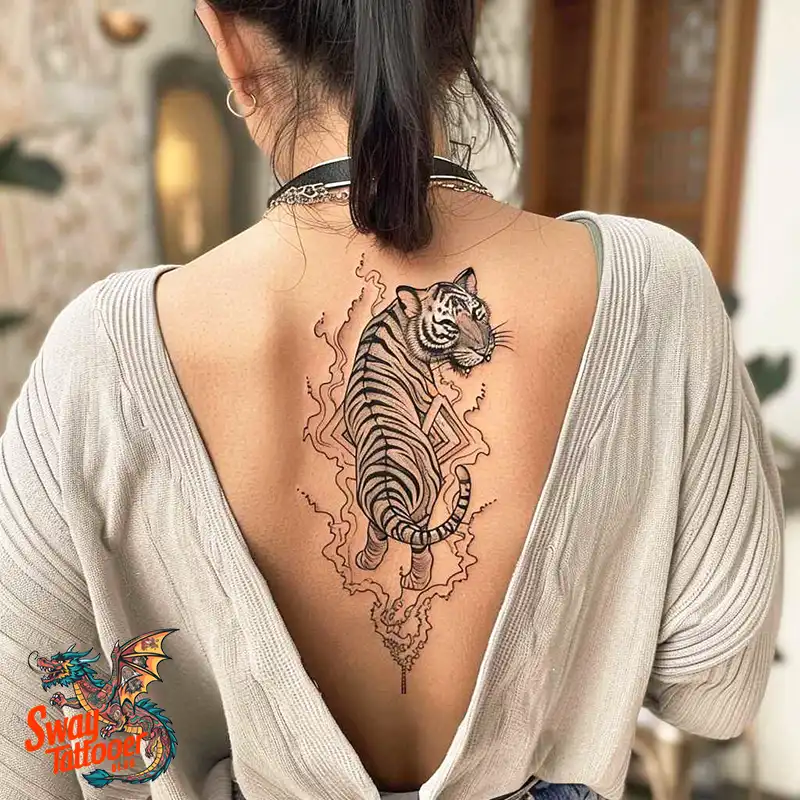
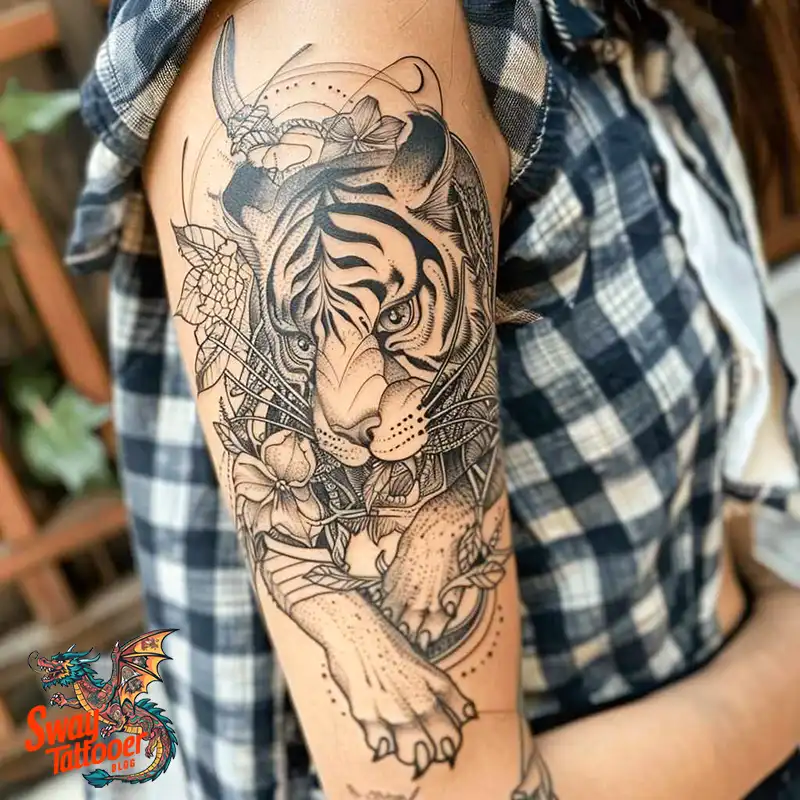

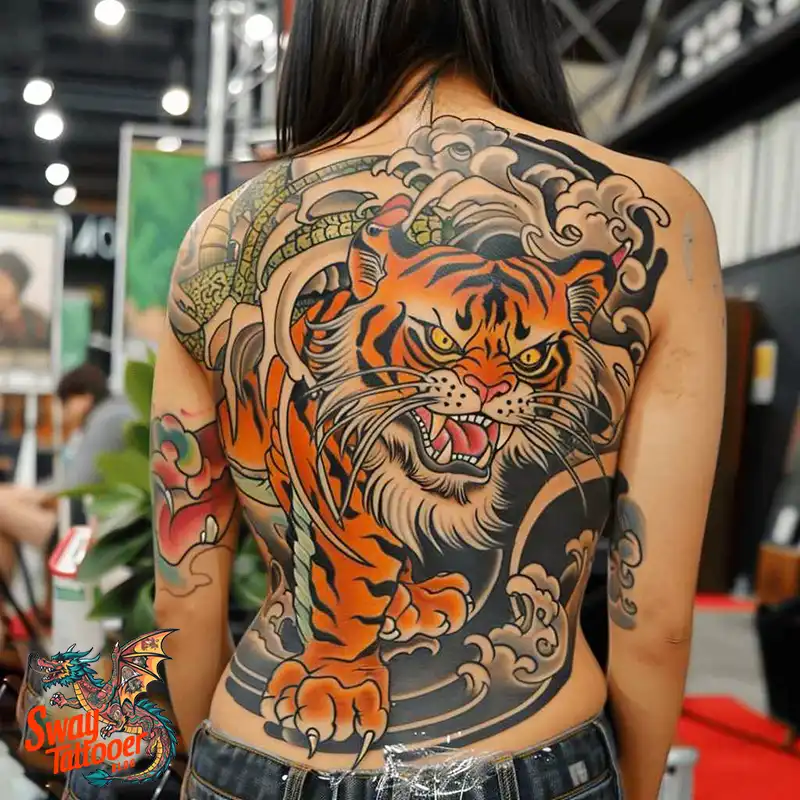
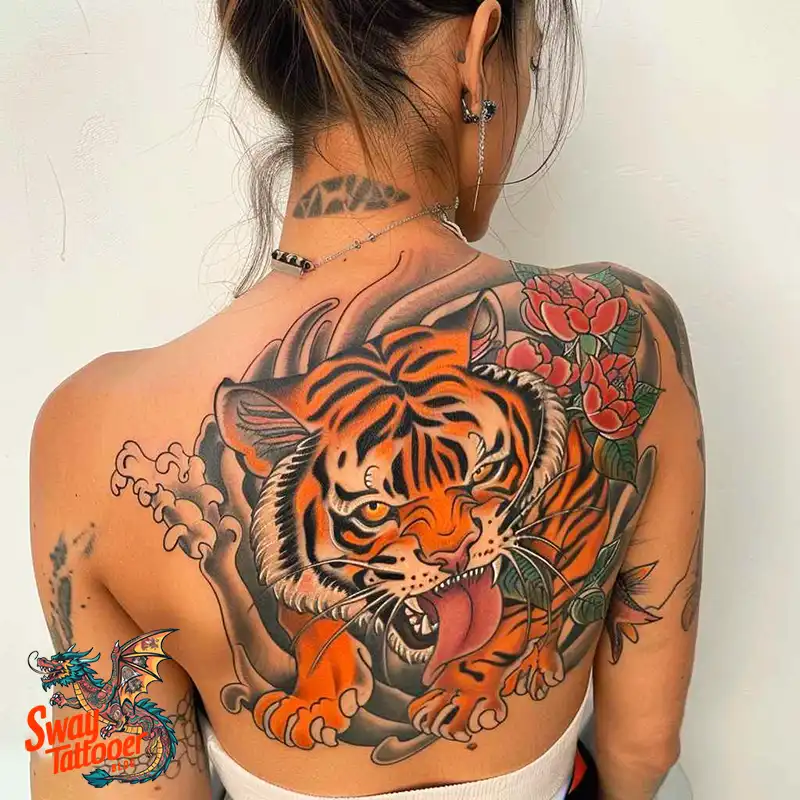
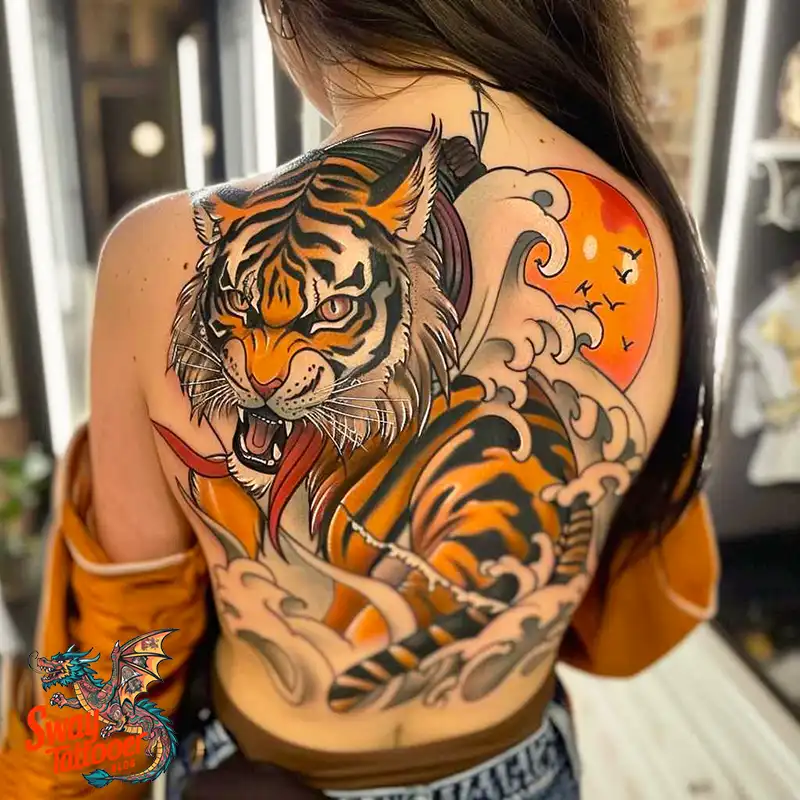
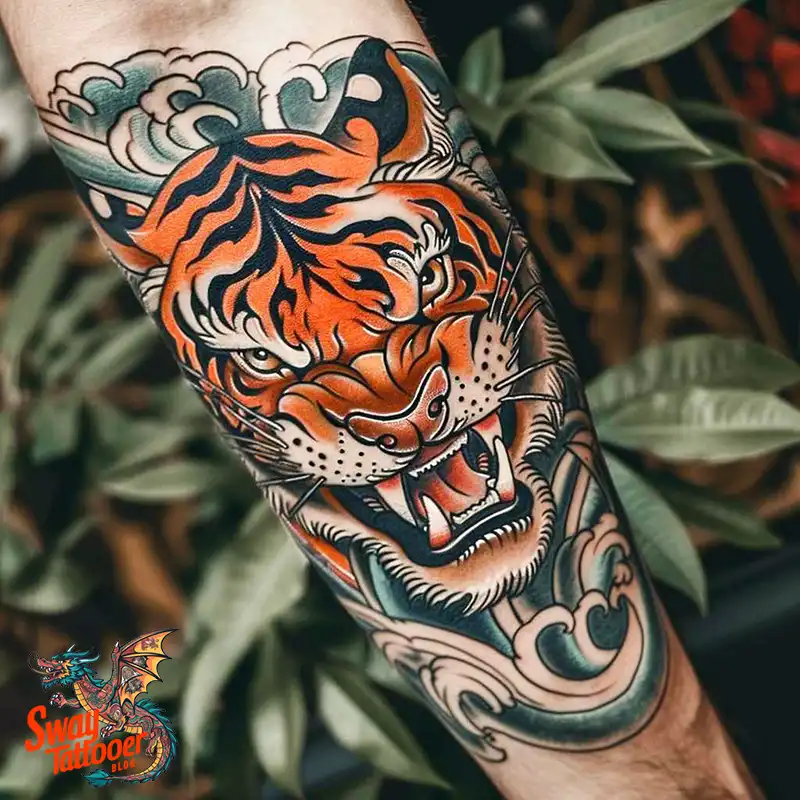
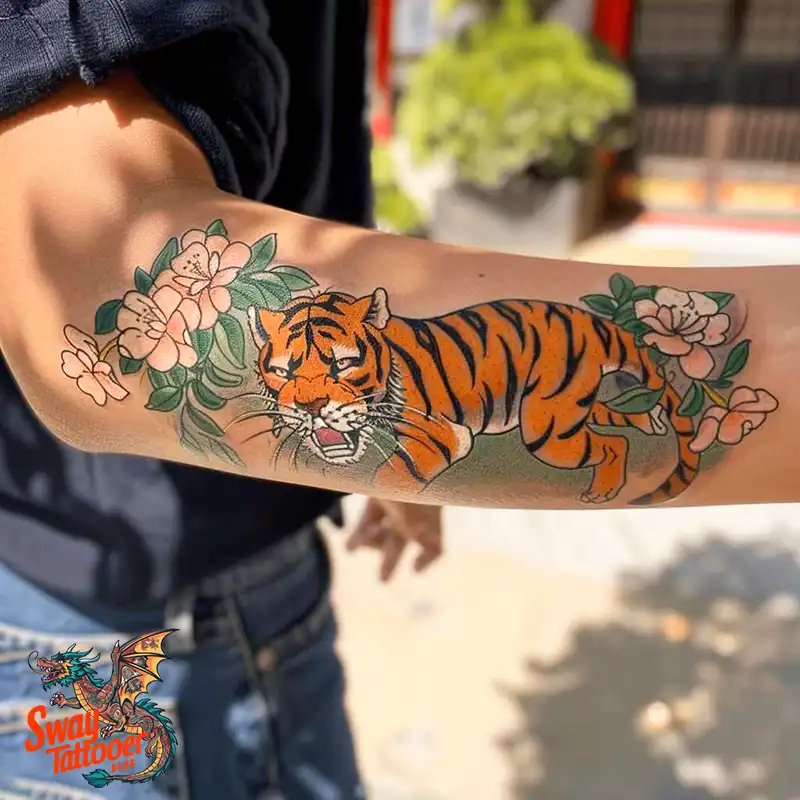
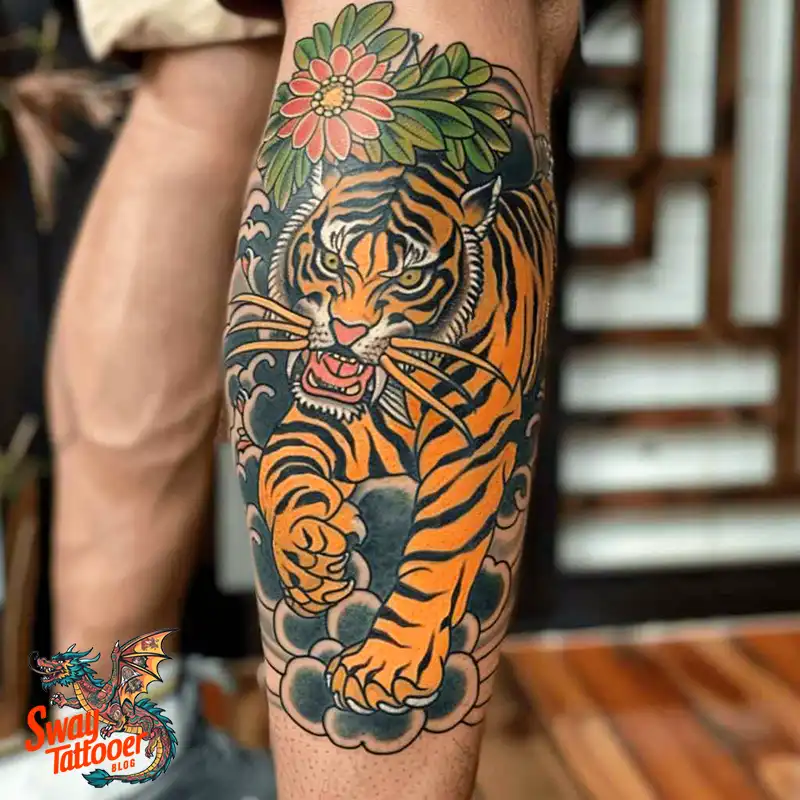
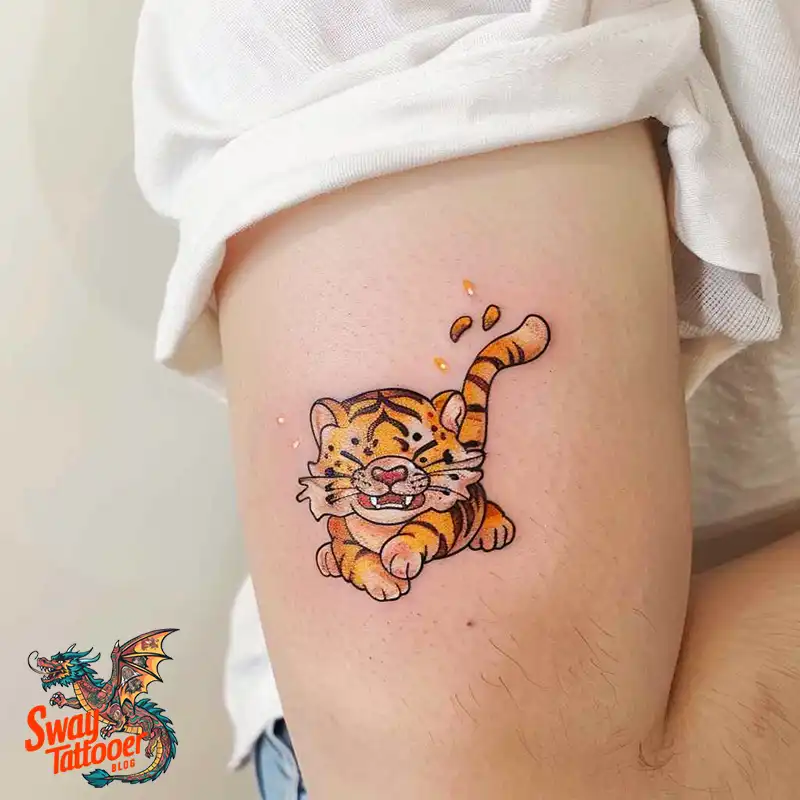
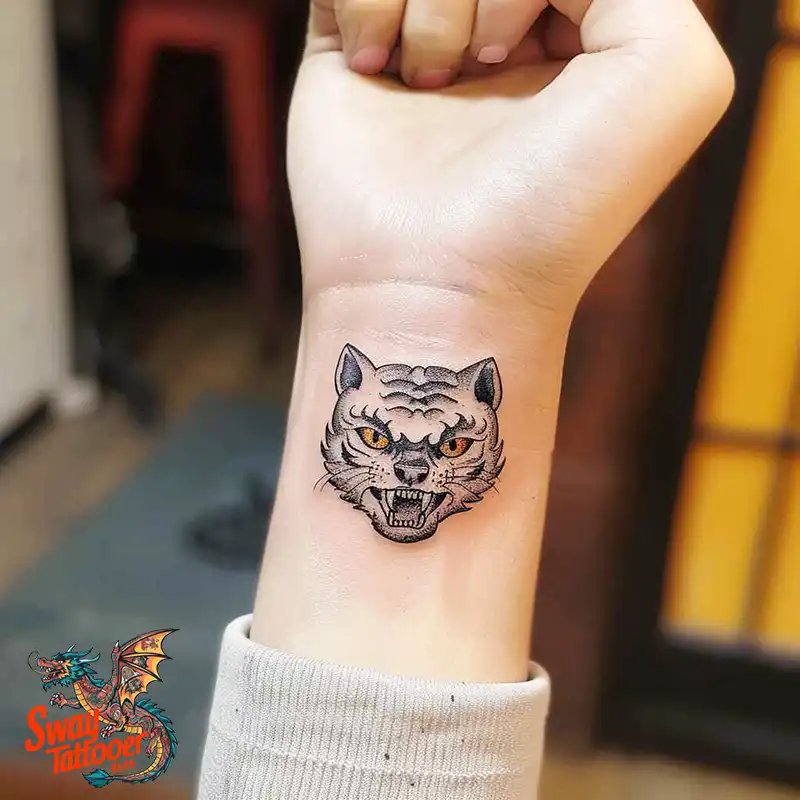


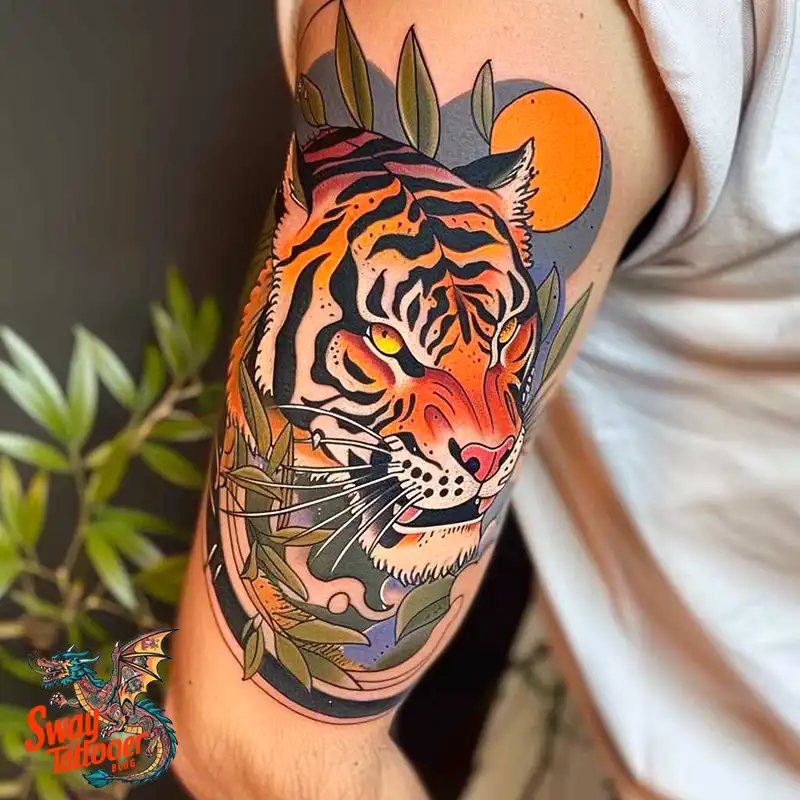
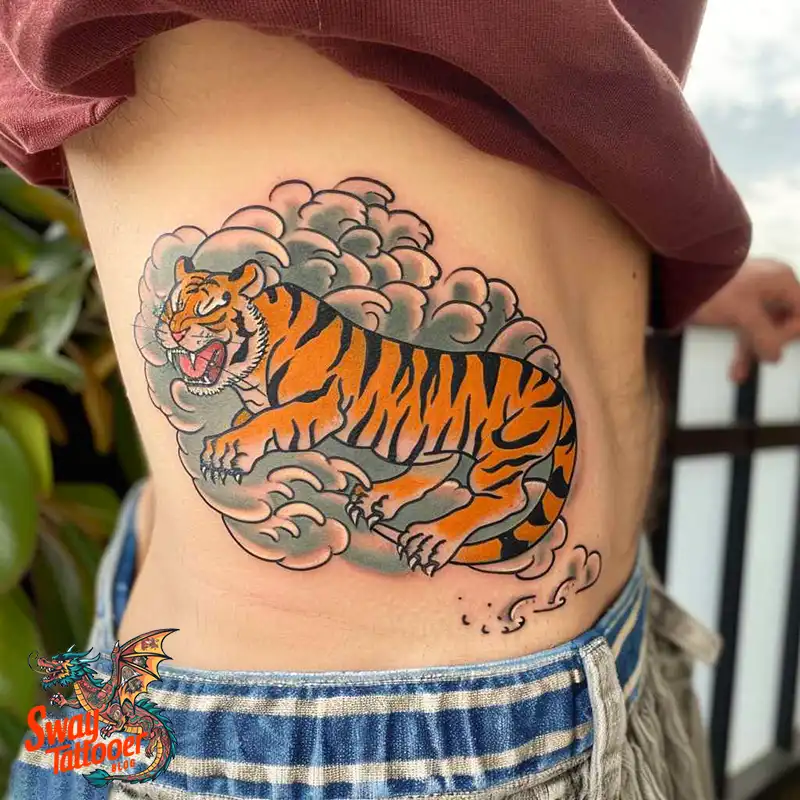
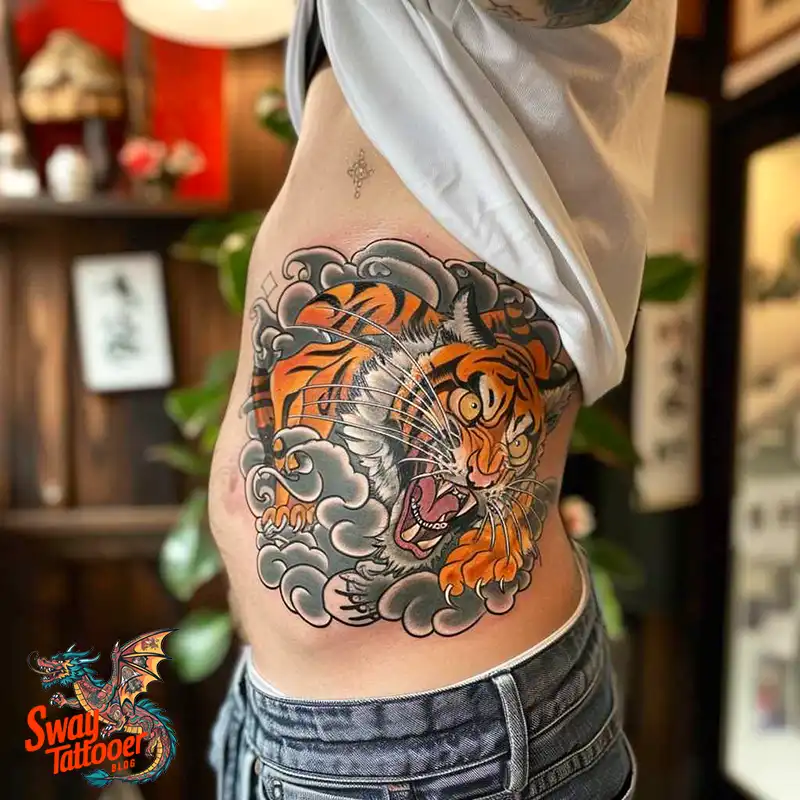

Raijū Tiger Tattoo
Raijū is a thunder beast that can control lightning and storms. A Raijū tiger tattoo might show a tiger wrapped in lightning or under dark clouds.
Relevance:
Raijū is raw natural power. This tattoo can symbolize your wild energy and your ability to brave through tough times.
Nekomata‑Tiger Tattoo
Nekomata are cat spirits that can raise the dead and start fires. They have split tails and spooky smiles. A Nekomata‑tiger tattoo might show a tiger with two tails and ghostly features.
Relevance:
Nekomata are tied to magic and life beyond death. This tattoo can stand for dark wisdom and control over your path.
FAQs:
Frequently Asked Questions (FAQ) about Yokai Japanese Tiger Tattoos
Q1: What are Yokai?
A1: Yokai are magical creatures from Japanese stories. They include ghosts, monsters, and spirits. Some Yokai are kind, some are naughty, and some are scary. Each Yokai has its tale that people have told for centuries.
Q2: How do Yokai link to Japanese tiger tattoos?
A2: Tigers and Yokai both come from old Japanese tales. Tigers stand for strength and protection. Sometimes artists mix tiger pictures with Yokai to tell a richer story in a tattoo.
Q3: What do tigers mean in Japanese tattoos?
A3: In Japan, tigers show power, courage, and speed. People believe tigers keep evil spirits away. A tiger tattoo can remind you to be brave and strong, yet humble.
Q4: Which Yokai often appear with tiger tattoos?
A4: Popular Yokai for tiger tattoos include:
- Tengu: Bird-like guards who love martial arts.
- Kitsune: Fox spirits that can be wise friends or tricky pranksters.
- Oni: Horned demons that can scare or protect you.
- Yuki‑onna: A beautiful snow spirit with a chilling touch.
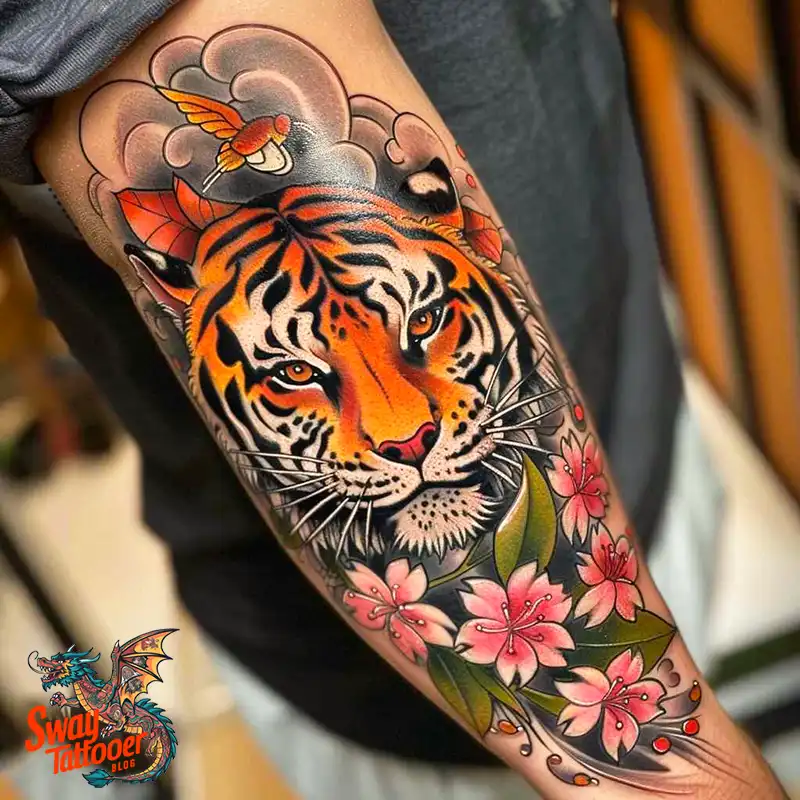
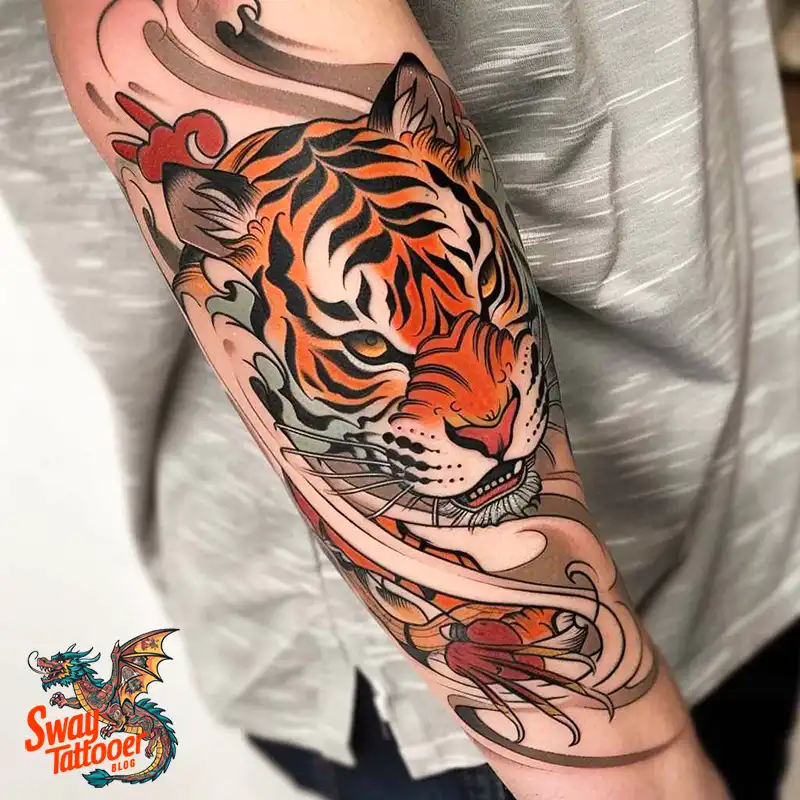
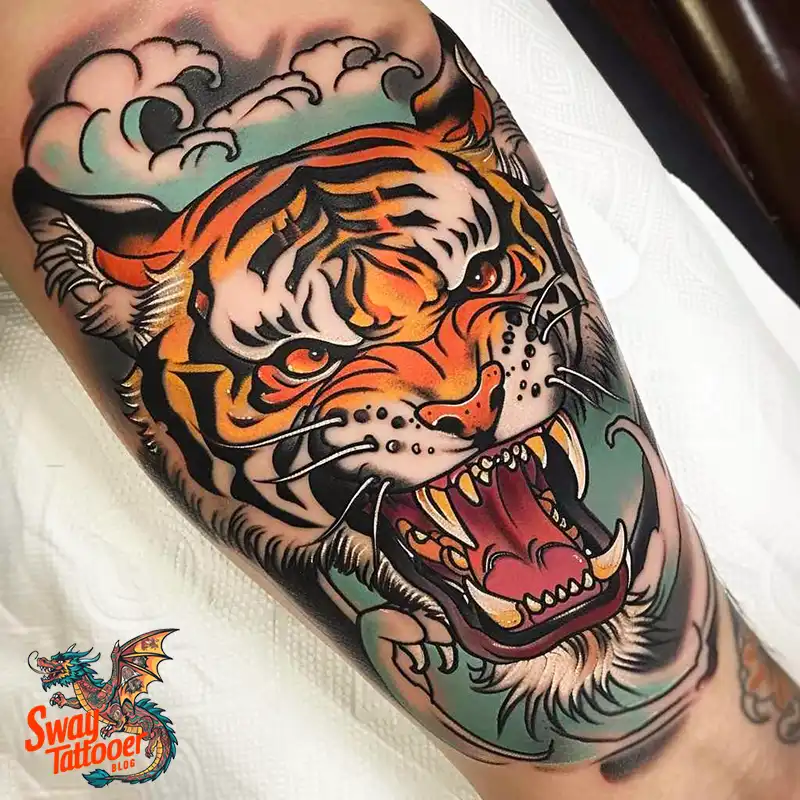
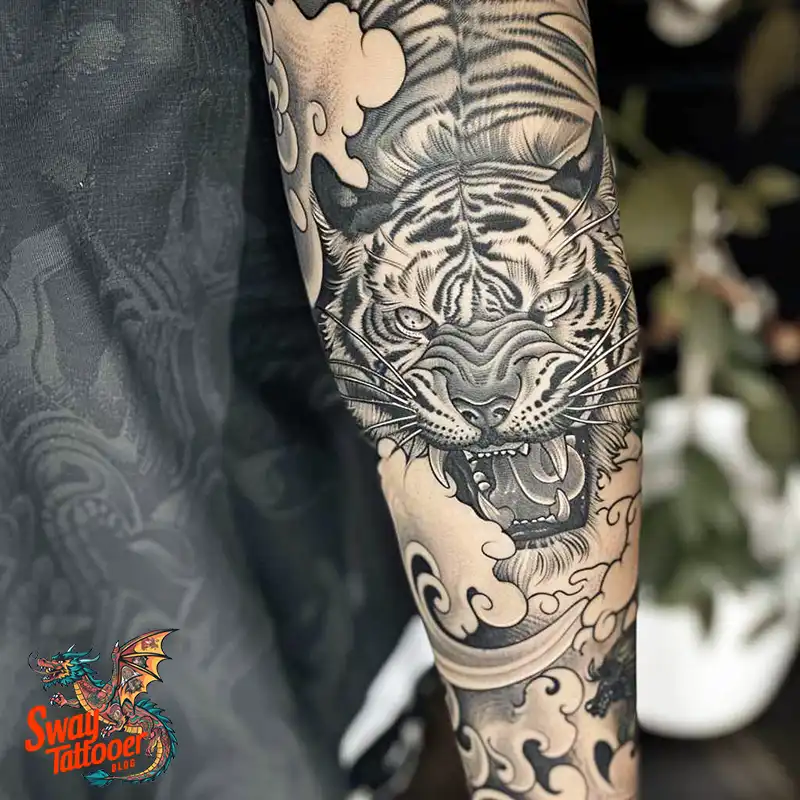
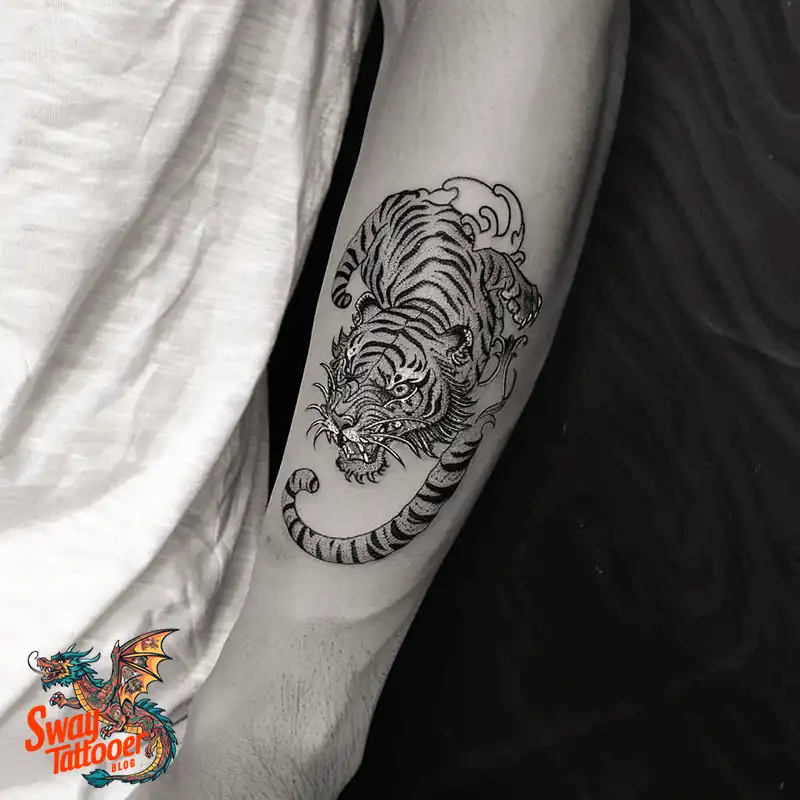
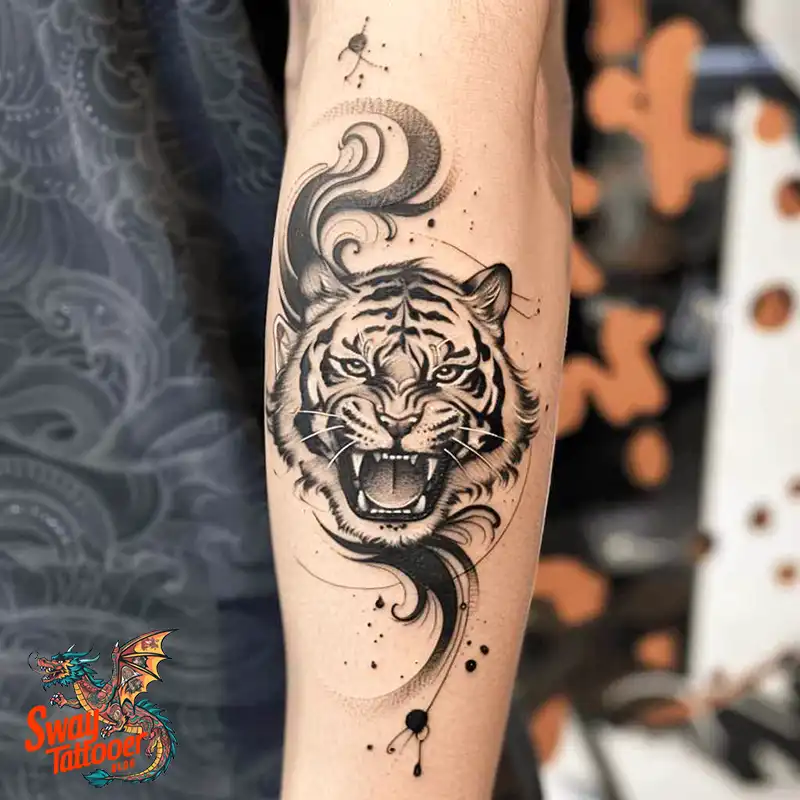
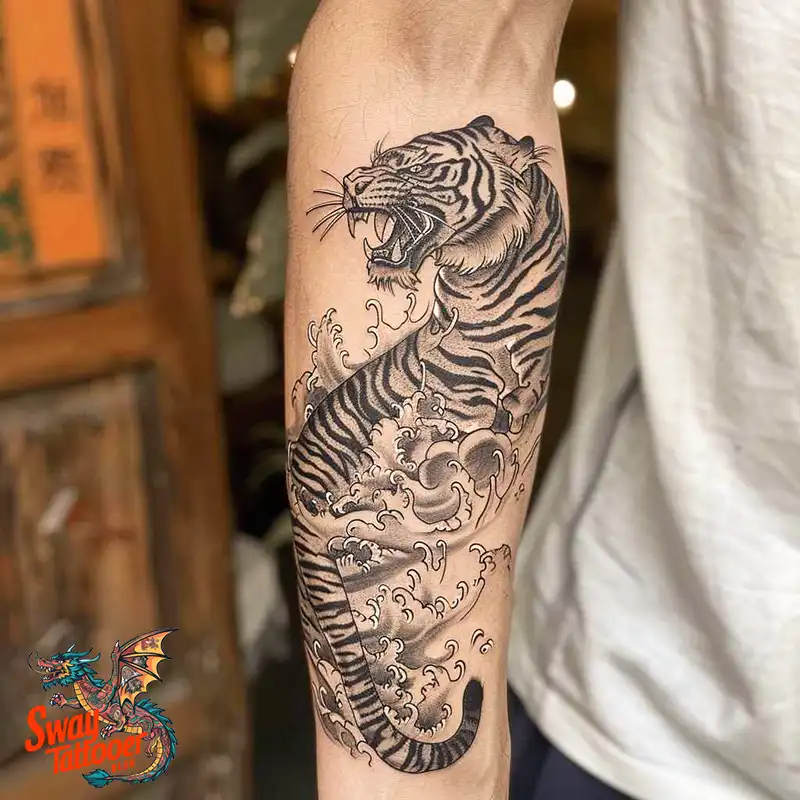
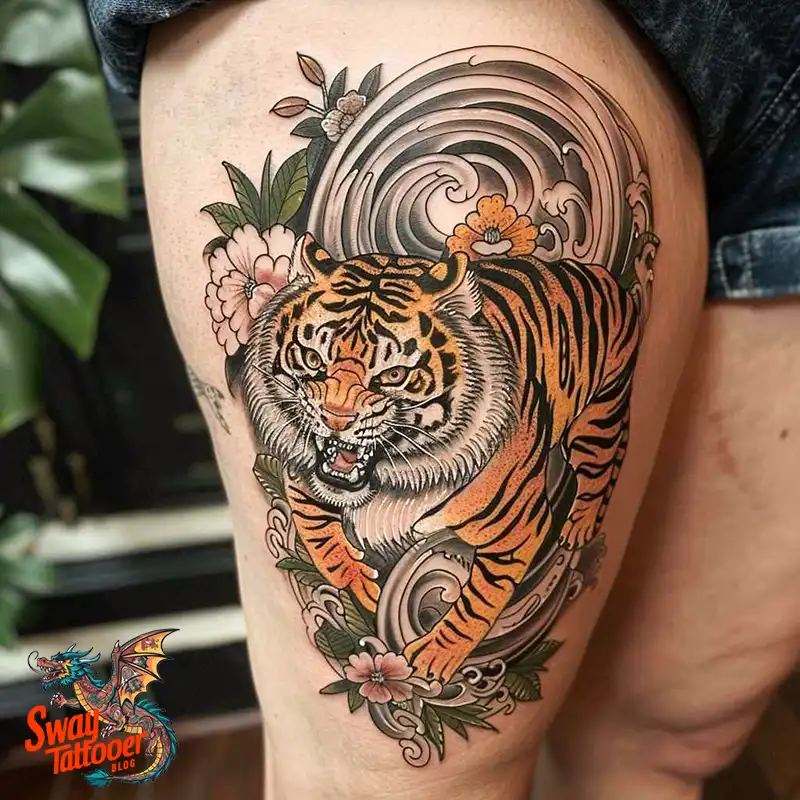
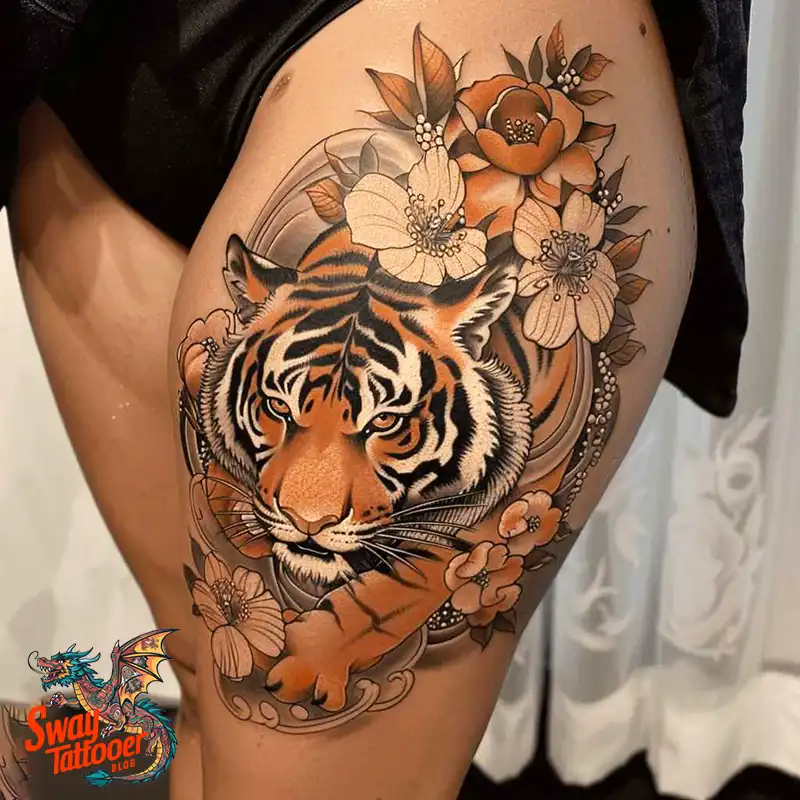
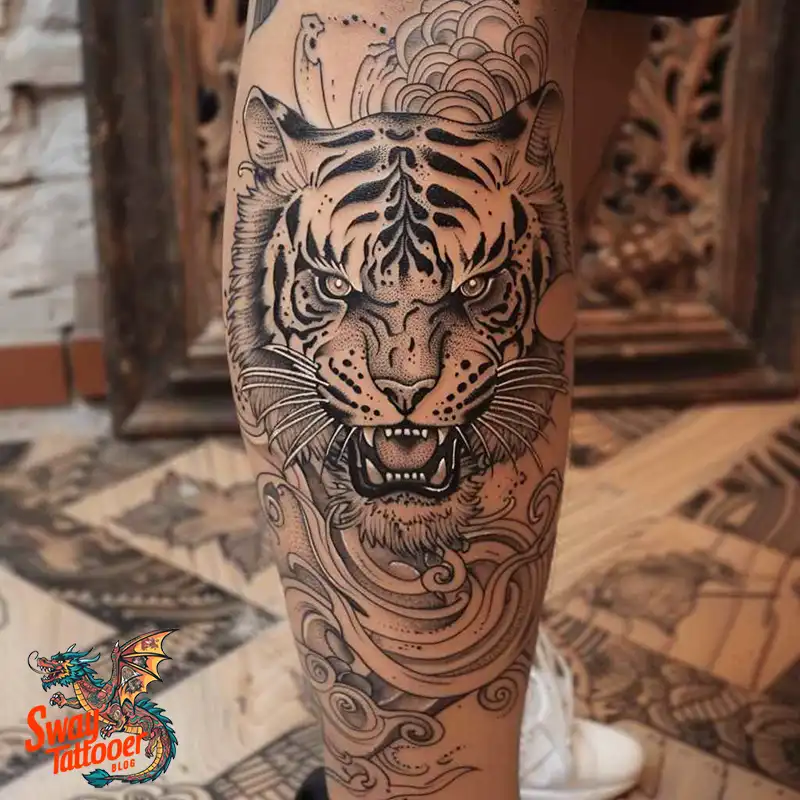
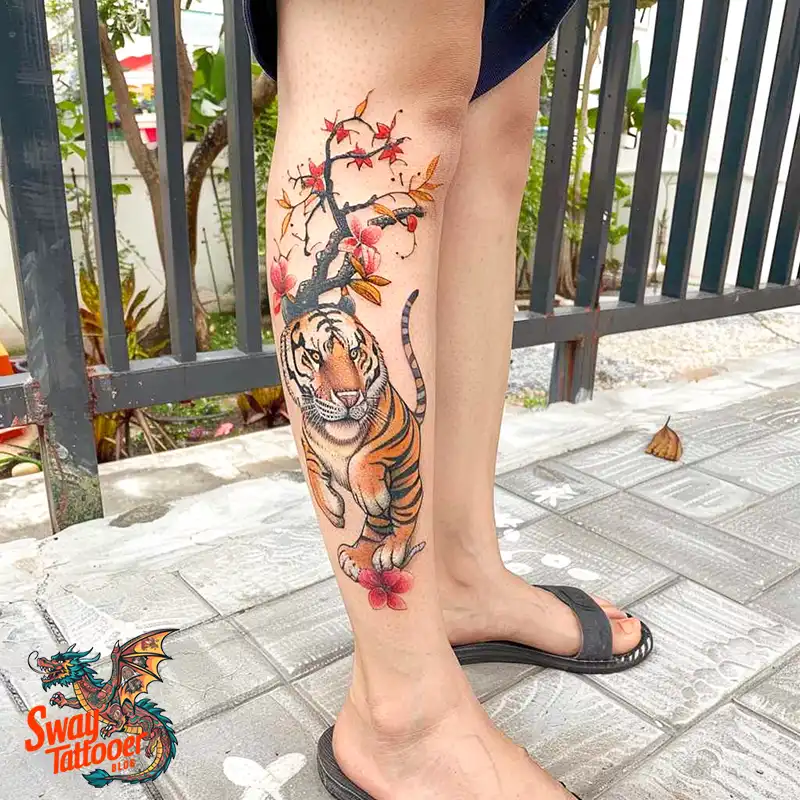
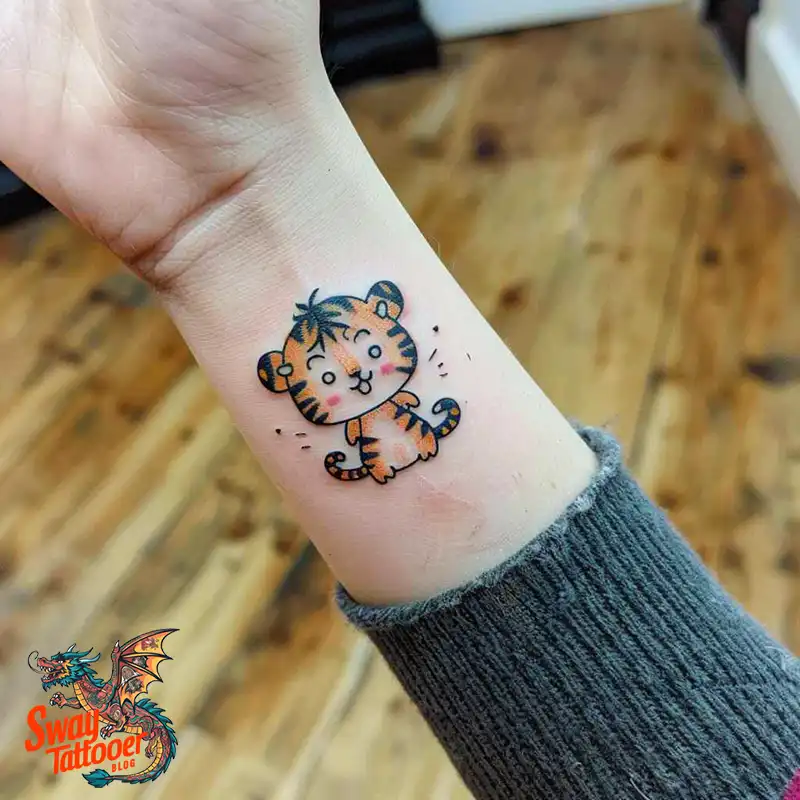
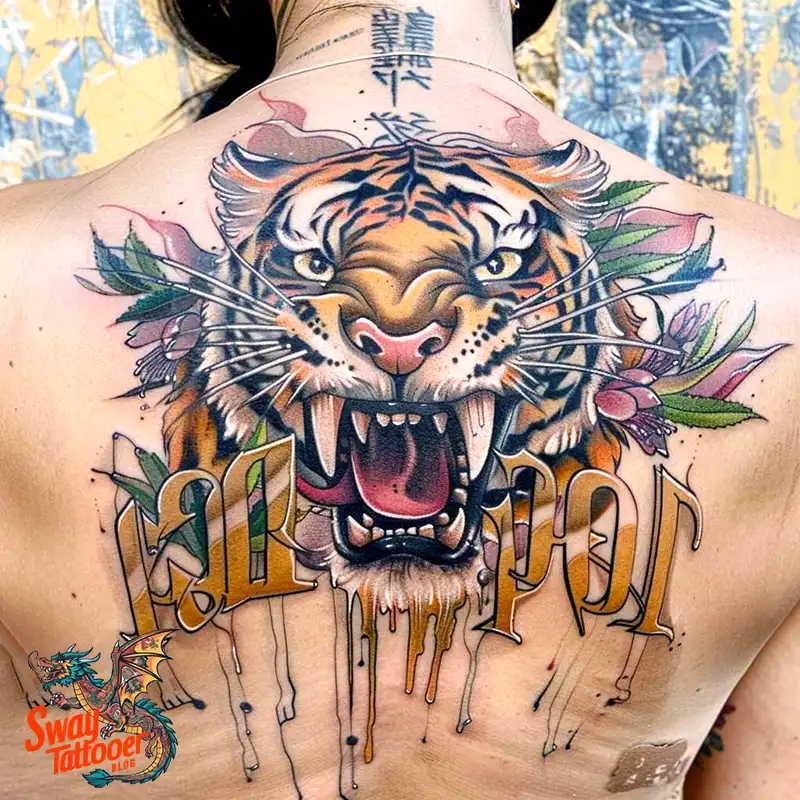
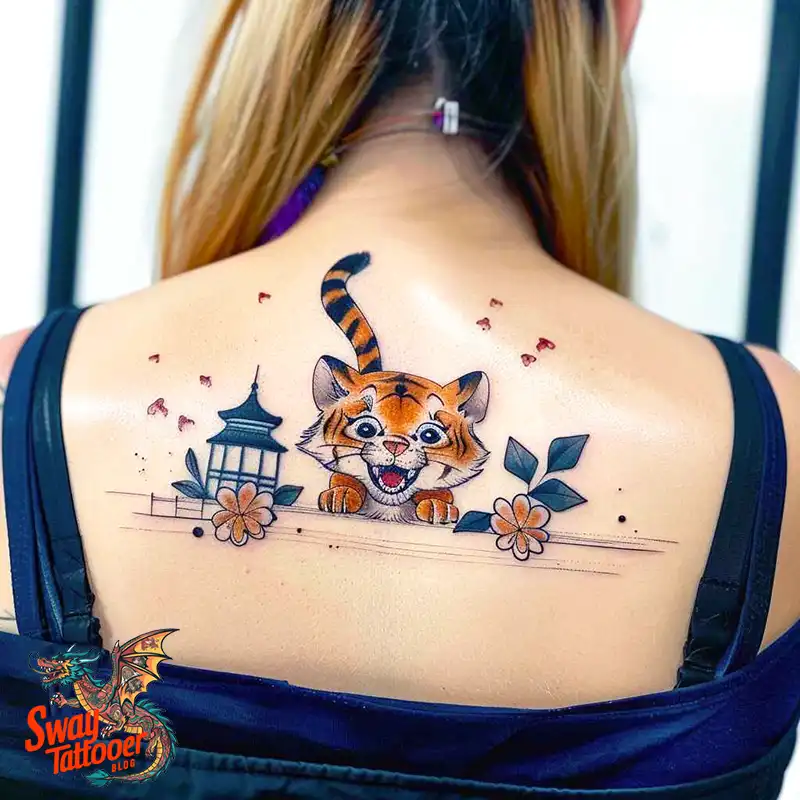
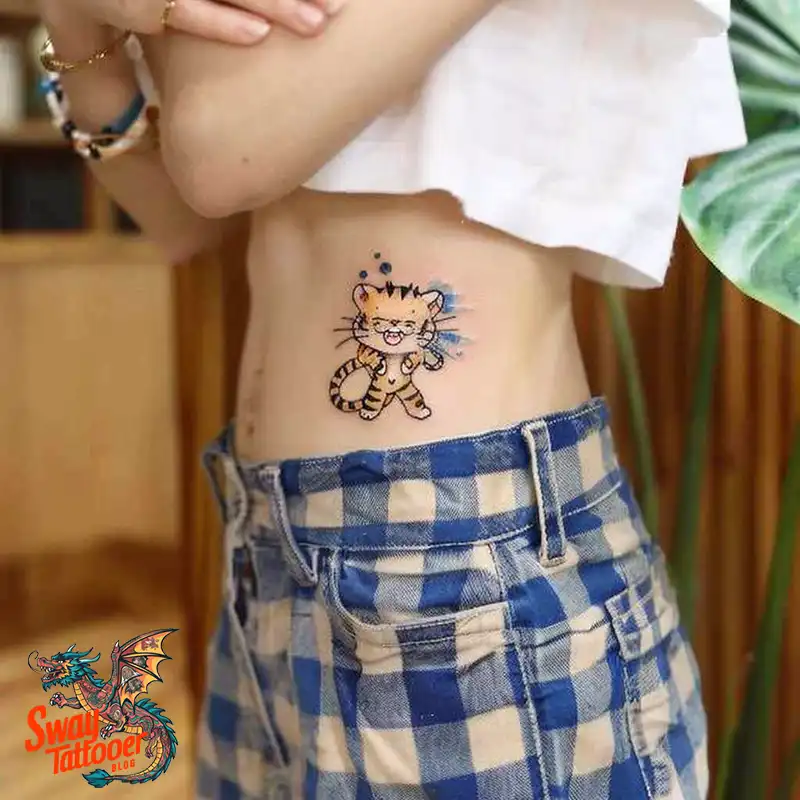
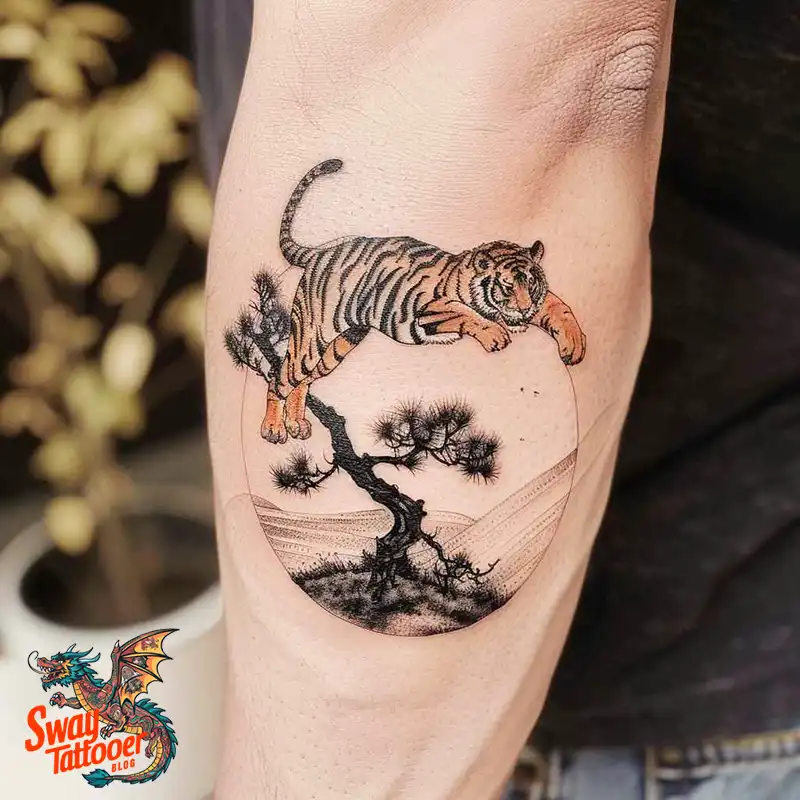
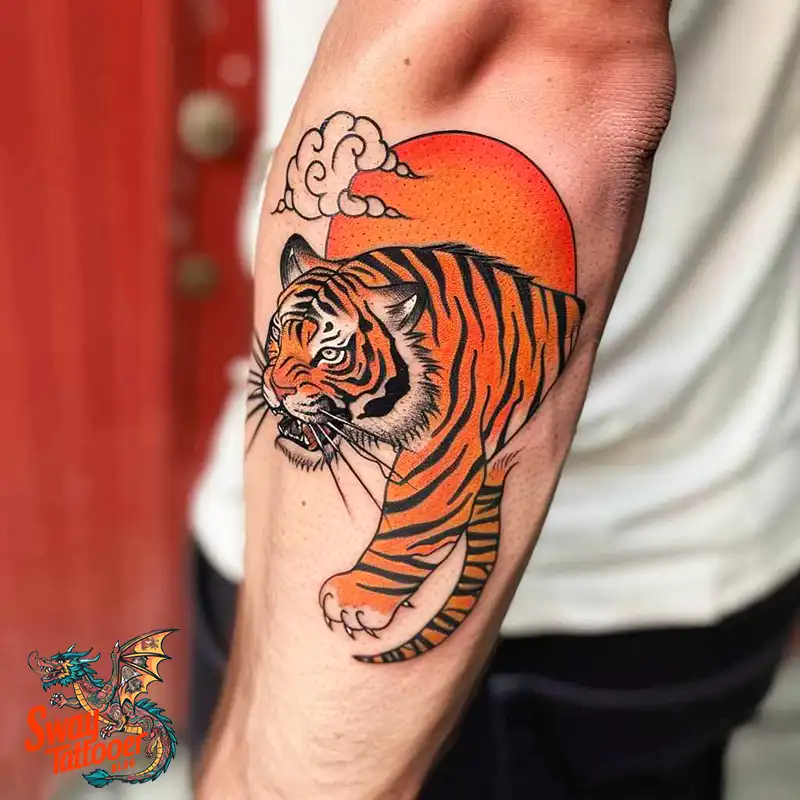
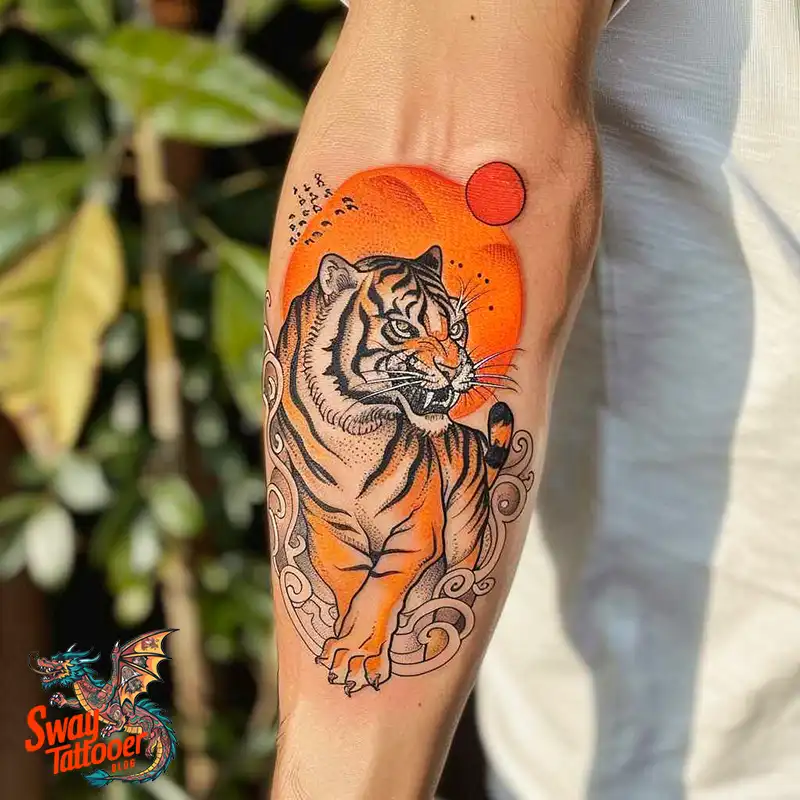
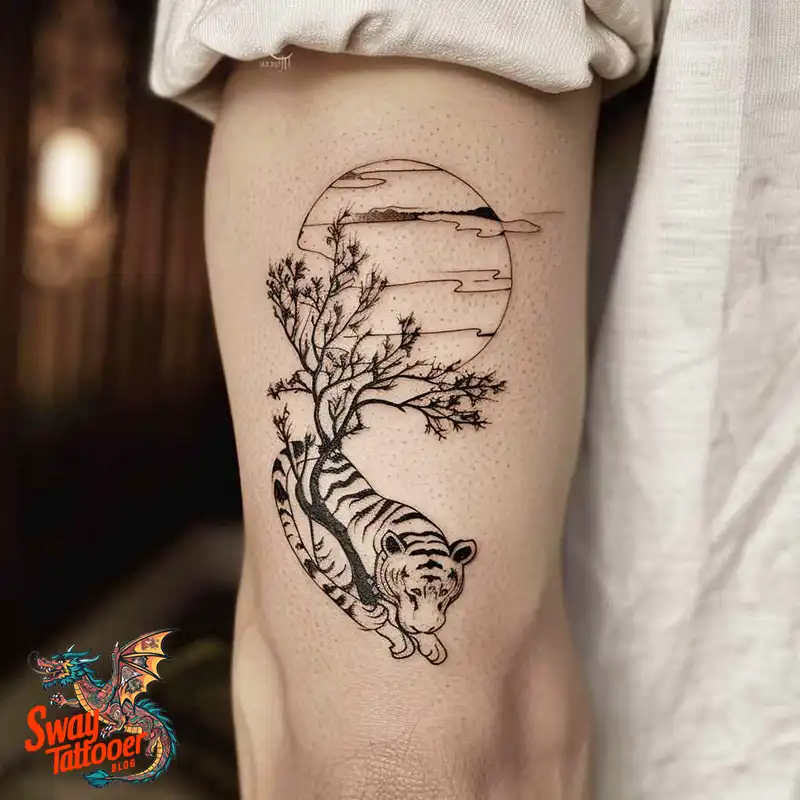
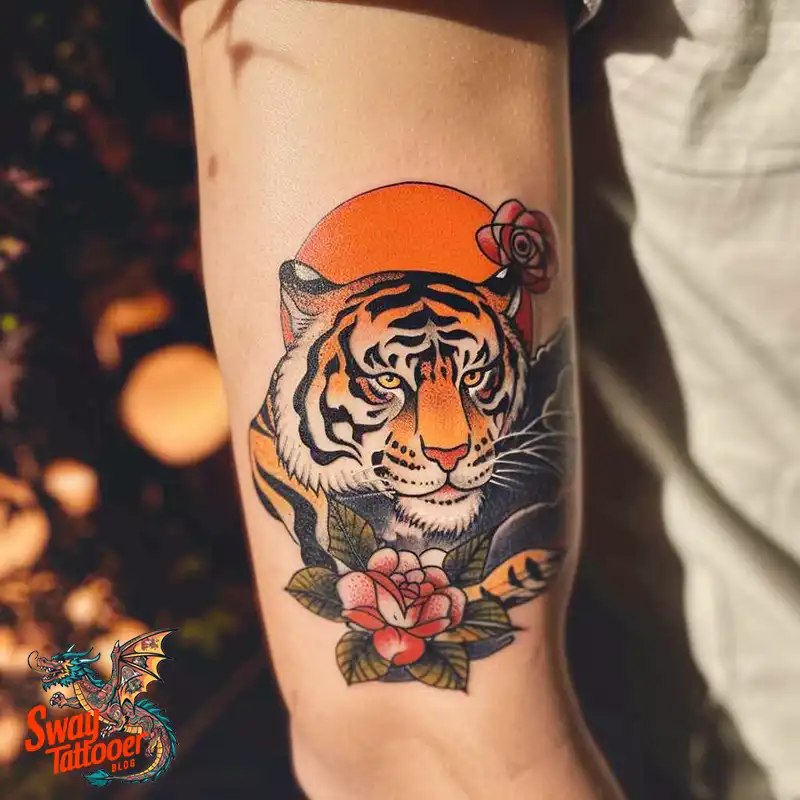

Q5: Are Yokai tiger tattoos right for me?
A5: If you love Japanese art and stories, a Yokai tiger tattoo can be great. Just learn what each symbol means. Talk with a tattoo artist who knows Japanese style to make sure your tattoo is respectful and special.
Q6: What should I think about when picking a Yokai tiger tattoo?
A6: Keep these in mind:
- Symbolism: Learn what the tiger and chosen Yokai represent.
- Artistry: Find an artist skilled in Japanese designs.
- Placement: Think about where on your body you want the tattoo and how big it will be.
- Personal Link: Choose symbols that match your own story or values.
Q7: How do I find a good artist for my Yokai tiger tattoo?
A7: Try these steps:
- Research: Look for artists who focus on Japanese tattoos and view their past work.
- Ask Around: Get suggestions from friends or online tattoo groups.
- Meet & Talk: Schedule a chat with artists to share your ideas. Make sure they respect the culture and symbols.
Q8: What happens when I get a Yokai tiger tattoo?
A8: Getting the tattoo usually goes like this:
- Consultation: You explain your idea to the artist.
- Design: The artist draws your custom tattoo.
- Tattooing: The artist inks your skin. This can take a few hours or several sessions.
- Aftercare: You follow the artist’s instructions to help the tattoo heal well.
Q9: How do I care for my new tattoo?
A9: Good care keeps your tattoo bright:
- Clean Gently: Wash with mild soap and water.
- Moisturize: Use a thin layer of tattoo balm or unscented lotion.
- Avoid Sun: Keep it covered or use sunscreen until it heals.
- Follow All Instructions: Do what your artist tells you for the best healing.
Q10: Can I make my Yokai tiger tattoo my own?
A10: Yes! You can add special elements just for you. Work with your artist to include your favorite Yokai, extra symbols, or personal imagery. This way, your tattoo tells your unique story.
Conclusion
In closing, yōkai Japanese tiger tattoos are more than pretty pictures on skin. They mix old stories, creative art, and personal meaning. Tigers in Japan stand for strength, protection, and living in balance with nature. Adding yōkai—mystical spirits—makes these tattoos even more magical and mysterious.
We looked at how yōkai and tiger art began in old folktales. We saw how people today bring those legends into tattoo shops. Each tattoo can mean something different, from local stories to someone’s own beliefs. Artists use special Japanese methods and their flair to craft detailed, eye-catching designs.
In the end, yōkai Japanese tiger tattoos remind us how powerful stories can be. They show our wish to capture the wild beauty and secret power of mythical creatures. These tattoos keep those legends alive, marking skin and hearts alike for many years to come.


Leave a Reply